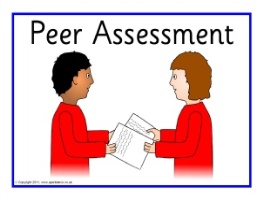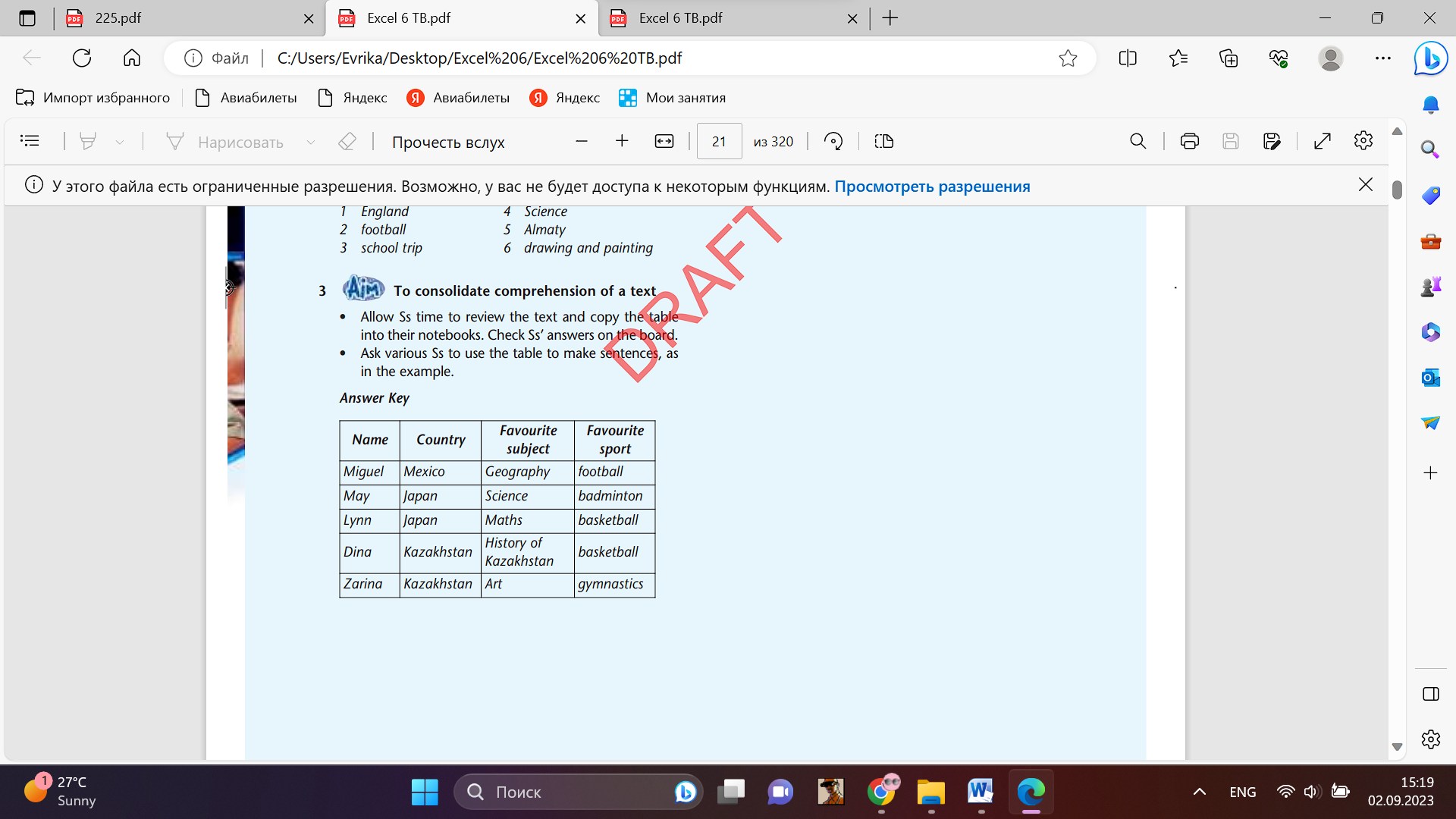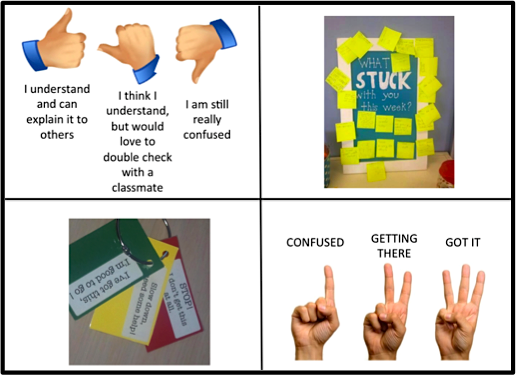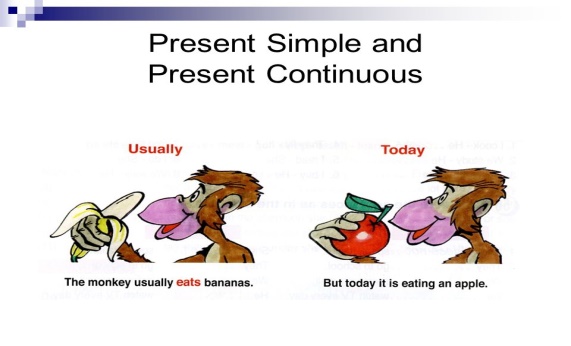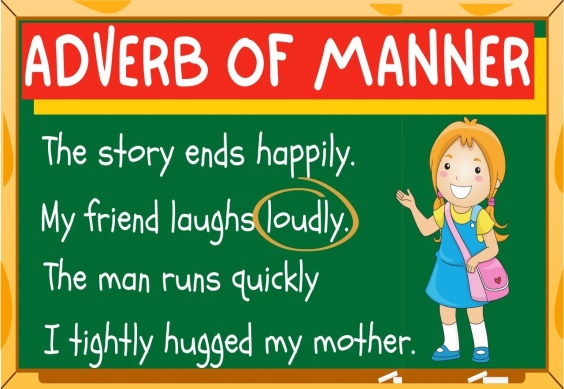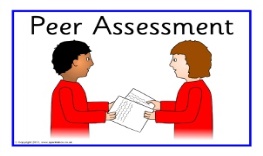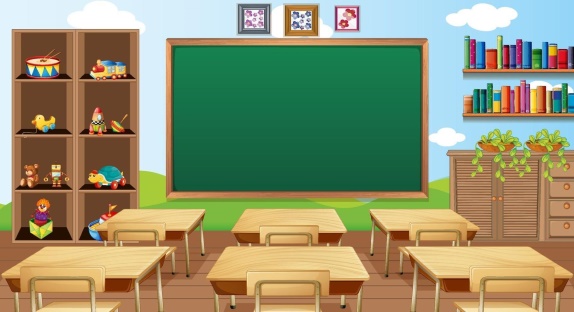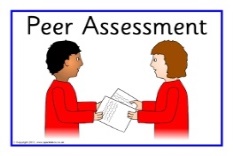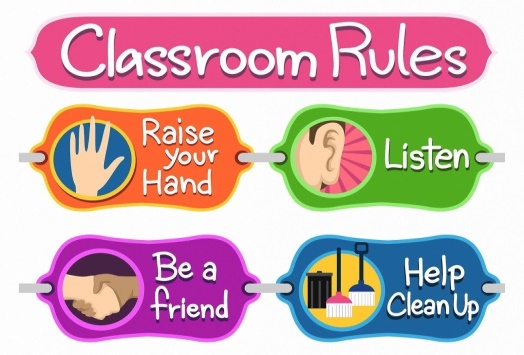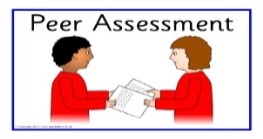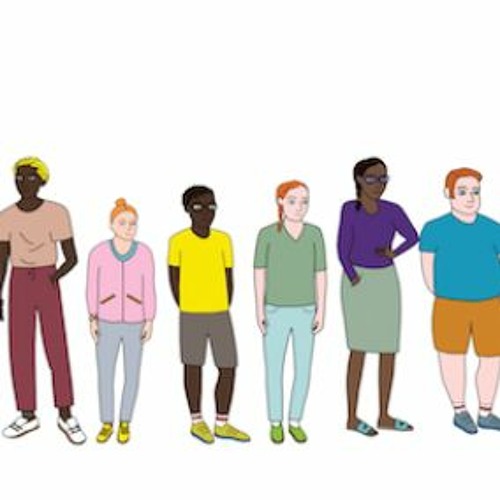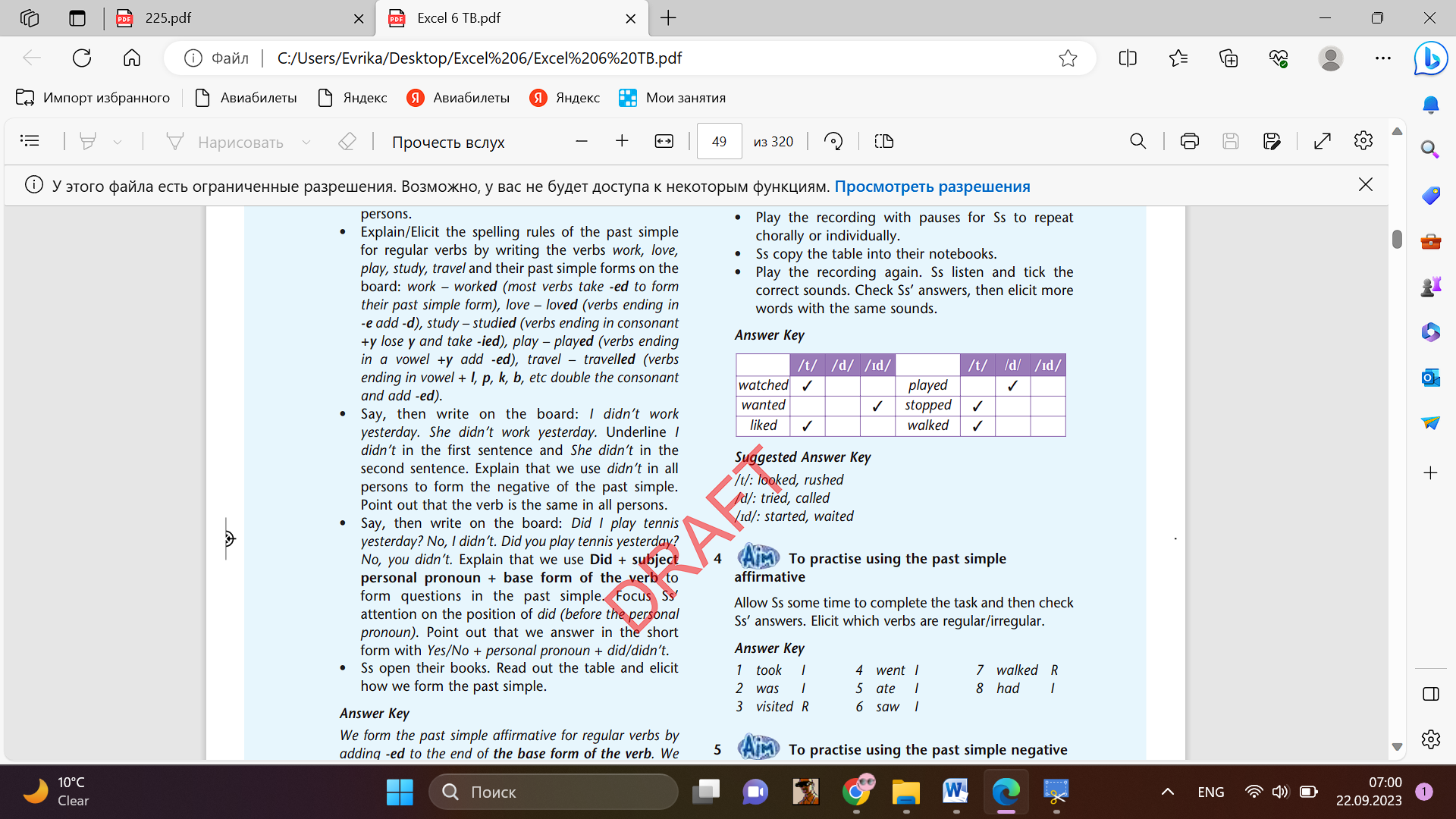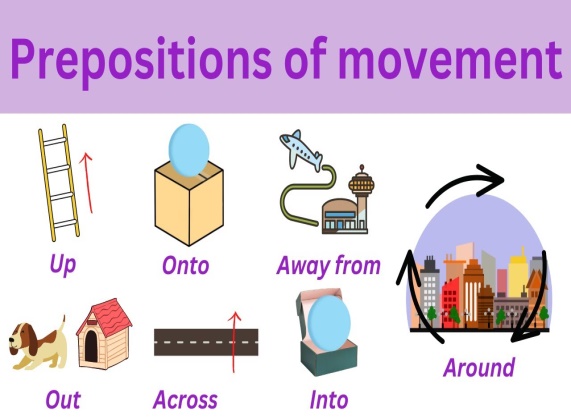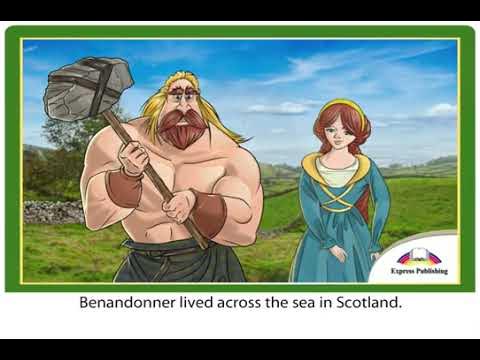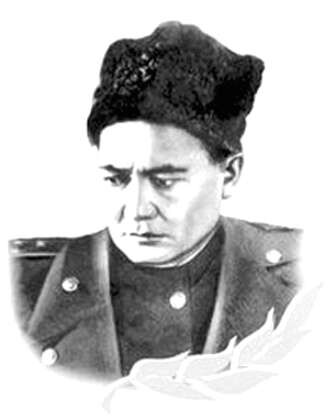
Назар аударыңыз. Бұл материалды сайт қолданушысы жариялаған. Егер материал сіздің авторлық құқығыңызды бұзса, осында жазыңыз. Біз ең жылдам уақытта материалды сайттан өшіреміз
Жақын арада сайт әкімшілігі сізбен хабарласады
қысқа мерзімді сабақ жоспарларын

ҚМЖ Excel 6 term 1.
Сатылымнан түскен қаражат авторға автоматты түрде аударылады. Толығырақ
беріледі

Дипломдар мен сертификаттарды алып үлгеріңіз!


Материалдың толық нұсқасын
жүктеп алып көруге болады
Short term plan
|
Unit 1: Our class lesson 1 |
School: |
||
|
Date: |
Teacher name: |
||
|
Grade: 6 |
Number present: |
absent: |
|
|
Lesson title |
Vocabulary: School subject |
||
|
Learning objectives |
6.2.1.1 understand a sequence of supported classroom instructions 6.3.1.1 provide basic information about themselves and others at sentence level on an increasing range of general topics |
||
|
Learning objectives (assessment criteria) |
Learners will be able to: Revise about school subject |
||
|
Levels of thinking skills |
Knowledge and comprehension |
||
|
Stages/ Time |
Teachers actions |
Students actions |
Assessment |
Resources |
|
Beginning 5 min |
Greeting. (Whale class, Individually) T tells the class to make groups of 2. Warm up: With books closed, ask: Where are we at the moment? Elicit the word classroom and write it on the board. Ask: What can you find in a classroom? Elicit a few words from individual students. - Is there a blackboard in the classroom? - Yes, there is - How many chairs are there in? - There are six T: What do you think about today’s theme? Setting the aim of the lesson.
|
Learners read the given sentences on the board and guess the topic and share with their ideas. Remember and recognize the main vocabulary. |
Teacher controles the process, gives feedback and asks additional questions if it’s nessasery. Teacher evaluate pupils with phrases like: “Good job! Well done!” Formative Assessment
|
Sheets of peppers Pictures of to be
https://images.app.goo.gl/UGEexbLhni3vQdXj9
|
|
Middle 30 min |
Task. I (Wh, I) (pair dicsussion) Ex: 1 P:5 To present Vocabulary for School Subjects Play the recording. Students listen and repeat chorally and/or individually. Elicit the L1 equivalents from various students Draw students’ attention to the pictures and ask various students to say which subject is shown in each picture. |
Students listen and repeat. What are these words in your language? Which ones can you see in the picture? ANSWERS Pic-1 science Pic-2 ICT Pic -3 Art Pic -4 Maths Pic-5 Geography |
T’s feedback
Descriptor: - write the name of objects Total: 2 point |
Student’s book |
|
|
Task. II (Wh, I) (Task for location) Ex: 2 P:5 To present Vocabulary for School Subjects Play the recording. Students listen and repeat chorally and/or individually. Elicit the L1 equivalents from various students Draw students’ attention to the pictures and ask various students to say which subject is shown in each picture. Differentiation: Modelling- teacher gives clear description of the task with examples By task – less motivated learners can do task with support |
Learners complete the sentences. ANSWERS My favourite school subjects are Maths, Music and Art. I’m good at Maths. I’m not good at History. |
Self -assessment T’s CCQs
Descriptor: - read the sentences - write true or false Total: 2 point |
Worksheets Stickers |
|
End 5 min |
“Finger” method is used to find out was the lesson clear or not. 5 fingers- I understood 4 fingers -I have some questions 2 fingers-I need a help Ex: P: Home task |
Ss show their knowledge according to the lesson Ss evaluate each other and encourage classmate with phrases like: W |
Poster Success Ladder |
|
Short term plan
|
Unit 1: Our class lesson 2 |
School: |
||
|
Date: |
Teacher name: |
||
|
Grade: 6 |
Number present: |
absent: |
|
|
Lesson title |
Reading: students around the world |
||
|
Learning objectives |
6.3.1.1provide basic information about themselves and others at sentence level on an increasing range of general topics 6.4.2.1 understand with little support specific information and detail in short, simple texts on a |
||
|
Learning objectives (assessment criteria) |
Learners will be able to: - Read about students around the world. - Learn about compound nouns, abstract nouns and noun phrases |
||
|
Levels of thinking skills |
Knowledge and comprehension |
||
|
Stages/ Time |
Teachers actions |
Students actions |
Assessment |
Resources |
|
Beginning 5 min |
Greeting. (Whale class, Individually) T tells the class to make groups of 2. Warm up: Ask an individual student to hold up their pen or notebook. Ask: Is that my pen / notebook? Elicit the answer (No, it’s Anna’s pen / notebook). Repeat the process with a different student. T: What do you think about today’s theme? Setting the aim of the lesson.
T gives opportunity to show learners finished tasks and find out new words to try them use in their speech. |
Learners read the given sentences on the board and guess the topic and share with their ideas. Remember and recognize the main vocabulary. |
Teacher controles the process, gives feedback and asks additional questions if it’s nessasery. Teacher evaluate pupils with phrases like: “Good job! Well done!” Formative Assessment
|
Sheets of peppers Pictures of to be
https://images.app.goo.gl/Xjx4fb1BrzGbUbdeA
|
|
Middle 30 min |
Task. I (Wh, I) (pair dicsussion) Ex: 1 P: 6 Ask students to look at the pictures A-D and elicit what identifies the people/subjects in each picture. Ask: Which pictures show two teenage girls in school uniforms? (A), (B) Which picture shows a teenage student in his classroom? (D) Which picture shows a teenage student in her ICT class? (C) Allow students time to read the texts 1-4 and elicit which picture matches which text Refer students to the Word List to look up the words in the Check these words box. Play the video for students and elicit their comments A learner with individual needs: will be supported by teacher and by helpers from his class. |
Learners read and match the pictures to the texts. ANSWERS A 4 B 3 C 1 D 2 |
T’s feedback
- to look at the pictures - match the pictures Total: 2 point |
Student’s book |
|
|
Task. II (Wh, I) (Task for location) Ex: 2 P: 6 To listen and read for specific information Ask students to go through the in complete sentences. Allow students three minutes to do the task. Alternatively, play the recording. Students do the task. Check Ss’ answers. T asks some CCQs:
|
Students listen to and read the text again. ANSWERS 1 England 2 football 3 school trip 4 Science 5 Almaty 6 drawing and painting Learners answers Yes or No in CCQ ANSWERS - Yes - No - No - Yes |
Self -assessment
Descriptor: - read the text - complete sentences Total: 2 point Descriptor: - answers Yes or No |
Worksheets |
|
|
Task. III (Task for understanding) Ex: 3 P: 6 Allow students time to review the text and copy the table into their notebooks. Check students’ answers on the board. Ask various students to use the table to make sentences, as in the example. |
Learners complete the table in your notebook, then makes sentences. ANSWERS
|
T’s feedback
Descriptor: - complete the table - makes sentences Total: 2 point |
Pictures Worksheet |
|
|
Task. IV Ex: 4 P: 7 Read out the theory box and then direct students to the text on p. 6 to find the items listed. Elicit answers from students around the class. Differentiation: Allow learners to choose the correct words with support. |
Learners read the theory find 3 compound nouns 2 abstract nouns and 4 noun phrases in the text. ANSWERS Compound nouns: school trip, football, basketball, Abstract noun: fun, humour Noun phrases: English class, favourite subject, favourite sport and best friend |
Self -assessment T s feedback Descriptor: - read the theory - find the items Total: 2 point |
|
|
|
Task. V Ex: 5 P: 7 Play the recording. Ss listen and repeat chorally and/ or individually. Elicit the L1 equivalents from Ss around the class and various Ss' favourite sports |
Learners listen and repeat. Answer the question. ANSWERS Student’s own answer |
Self -assessment Descriptor: - listen and repeat. - answer the question. Total: 2 point |
|
|
|
Task. VI Ex: 6 P: 7 Read the Study Skills box aloud, then ask Ss to look at the gaps and say what type of word is missing from each one. Elicit Ss' answers. Differentiation: This task differentiated by the time management. More able Ss finish firstly and less able Ss finish later. |
Learners look at gaps. Ask for a name, a noun, a number ANSWERS 1 name 2 noun 3 number 4 noun 5 noun |
Descriptor: - work in pairs - match the object pronouns Total: 2 point |
|
|
|
Task. VII Ex: 7 P: 7 Ask Ss to complete the task in closed pairs and make notes. Ask some pairs to act out the dialogues for the class. |
Learners work in pairs. Ask and answer the questions. Make notes. ANSWERS A: What's your name? B: My name's Askhat. A: How do you spell it? B: A-S-K-H-A-T A: What's your surname? B: My surname's Suleimanov. A: Where are you from? B: I'm from Semey, Kazakhstan. A: How old are you? B: I'm 13 years old. |
Feedback: “Thumbs up, thumbs down” After correct answer teacher shows thumbs up, if there are some mistakes thumbs down with comments Descriptor: - work in pairs - match the object pronouns Total: 2 point |
|
|
End 5 min |
The Ladder method was used as a reflection. T asks Ss to stick their stickers to the Success Ladder. Green- I understood Yellow-I have some questions Red-I need a help. Home task Ex: P: |
Ss use their stickers to show their knowledge according to the lesson
|
Poster Success Ladder |
|
Short term plan
|
Unit 1: Our class lesson 3 |
School: |
||
|
Date: |
Teacher name: |
||
|
Grade: 6 |
Number present: |
absent: |
|
|
Lesson title |
Use of English: Present simple and Present continuous |
||
|
Learning objectives |
6.5.3.1 write with support factual descriptions at text level which describe people, places and objects 6.6.9.1 use appropriately an increased variety of present and past simple active and some passive forms on a growing range of familiar general and curricular topics |
||
|
Learning objectives (assessment criteria) |
Learners will be able to: - Revise / compare the present simple and the present continuous - Learn adverbs of frequency - revise the third-person singular form of the present simple and identify third-person verb endings |
||
|
Levels of thinking skills |
Knowledge and comprehension |
||
|
Stages/ Time |
Teachers actions |
Students actions |
Assessment |
Resources |
|
Beginning 5 min |
Greeting. (Whale class, Individually) T tells the class to make groups of 2. Warm up: Ask students to close their eyes and think about a person that its important for them (like their mom, dad, husband, wife, dog, etc), tell them to think about what are they doing right now (for example 'She is preparing lunch', 'he is working', 'he is running', etc). Make sure the students are using the correct form of Present Continuous, be at hand to correct mistakes or provide help with some vocabulary students may need to make their sentences.T: What do you think about today’s theme? Setting the aim of the lesson.
|
Learners read the given sentences on the board and guess the topic and share with their ideas. Remember and recognize the main vocabulary. |
Teacher controles the process, gives feedback and asks additional questions if it’s nessasery. Teacher evaluate pupils with phrases like: “Good job! Well done!” Formative Assessment
|
Sheets of peppers Pictures of to be
https://images.app.goo.gl/82NQFZbNn5J5Yu166
|
|
Middle 30 min |
Task. I (Wh, I) (pair dicsussion) Ex: 1 P: 8 Students’ books closed. Say, then write on the board: I always eat breakfast in the morning. Elicit what tense the verb is in (present simple) and what the sentence expresses (a habit / routine). Say, then written the board: I am teaching a lesson now. Elicit what tense the verb is in (present continuous) and what the sentence expresses (an action happening now). • Then ask students to find examples in the text A learner with individual needs: will be paired with helpers and teacher allows him to find examples in the text |
Learners read the theory. Find examples in the text. ANSWERS Examples in the text: Present simple: I’m 12 years/ICT is really fun/my favourite sport is football/She has a great sense of humour/She is very good at drawing and painting, etc. Present continuous: We’re having a great time! |
Feedback: “Thumbs up, thumbs down” After correct answer teacher shows thumbs up, if there are some mistakes thumbs down with comments Descriptor: - read the theory - find examples Total: 2 point |
Student’s book |
|
|
Task. II (Wh, I) (Task for location) Ex: 2 P: 8 Explain the task and explain that stative verbs are verbs that express a state rather than an action (e.g. like, love, hate, believe, etc ). • Remind students that they don’t have continuous forms. • Give students time to complete the task then check students’ answers. |
Learners put the verbs in brackets into the present simple or present continuous. Which verbs are stative verbs? ANSWERS 1 are you doing, ‘m waiting 2 do you play, is raining 3 helps, wants (stative verb) 4 are you hurrying, leaves 5 is Ulzhan sleeping, ‘s reading 6 look (stative verb), ‘m studying |
Self -assessment
Descriptor: - complete the task - put the verbs in present continuous Total: 2 point |
Worksheets |
|
|
Task. III (Task for understanding) Ex: 3 P: 8 Explain the task and ask students to copy the table into their notebooks. •Give students time to complete it with the verbs and then play the recording for students to listen and check their answers. • Play the recording again with pauses for students to repeat either chorally or individually. Pay attention to students’ intonation. Differentiation: This task differentiated by the time management. More able Ss finish firstly and less able Ss finish later. |
Learners copy the table. Write the third person singular of the verbs: help, rear, tidy, do, enjoy, walk, watch, have, wake up, play, go, finish ANSWERS [s]: helps, works, wakes up [z] reads, tidies, does, enjoys, has, plays, goes [iz] watches, finishes |
T’s comment Descriptor: - copy the table - rite the third person singular Total: 2 point |
Pictures Worksheet |
|
|
Task. IV Ex: 4 P: 8 Point out that the words in bold are adverbs of frequency and they show how often we do something. • Elicit where in the sentence the adverbs of frequency appear (before the main verb, but after the verb ‘to be’) and read out the table and elicit the missing words |
Learners read the sentences. Complete the rule. Use before or after ANSWERS Adverbs of frequency usually go 1) before the main verb, but 2) after the verb to be |
Self assessment
Descriptor: - read the sentences. - complete the rule Total: 2 point |
Pictures |
|
End 5 min |
The Ladder method was used as a reflection. T asks Ss to stick their stickers to the Success Ladder. Green- I understood Yellow-I have some questions Red-I need a help. Ex: P: Home task |
Ss use their stickers to show their knowledge according to the lesson
|
Poster Success Ladder |
|
Short term plan
|
Unit 1: Our class lesson 4 |
School: |
||
|
Date: |
Teacher name: |
||
|
Grade: 6 |
Number present: |
absent: |
|
|
Lesson title |
Use of English: Adverbs –comparative forms |
||
|
Learning objectives |
6.5.3.1 write with some support about personal feelings and opinions on a limited range of familiar general and curricular topics; 6.6.15.1 use common verbs followed by infinitive verb / verb + ing patterns, use infinitive of purpose on a limited range of familiar general and curricular topics |
||
|
Learning objectives (assessment criteria) |
Learners will be able to: - Learn adverbs of frequency - Learn the – ing form and the to – infinitive - Learn types of adverbs and their comparative forms |
||
|
Levels of thinking skills |
Knowledge and comprehension |
||
|
Stages/ Time |
Teachers actions |
Students actions |
Assessment |
Resources |
|
Beginning 5 min |
Greeting. (Whale class, Individually) T tells the class to make groups of 2. Warm up: Hot potato Give students a ball. Play some music, let students pass the ball and stop the music. Whoever is holding the ball has to answer a question. Repeat. There are six chairs in the classroom. Setting the aim of the lesson.
|
Learners read the given sentences on the board and guess the topic and share with their ideas. Remember and recognize the main vocabulary. |
Teacher controles the process, gives feedback and asks additional questions if it’s nessasery. Teacher evaluate pupils with phrases like: “Good job! Well done!” Formative Assessment
|
Sheets of peppers Pictures of to be
https://images.app.goo.gl/rf6igZcdf4jCYKC5A
|
|
Middle 30 min |
Task. I (Wh, I) (pair dicsussion) Ex: 6 P: 9 Explain the task and read out the example sentence. Give students time to write sentences for the rest of the items and then check students’ answers around the class. |
Learners write sentences. How often do you do any of the following. ANSWERS 1 I often go to the park 2 I sometimes help with the housework. 3 I always surf the Net in the evening. |
T’s feedback Descriptor: - write sentences. Total: 2 point |
Student’s book |
|
|
Task. II (Wh, I) (Task for location) Ex: 7 P: 9 Go through the theory table with students. Elicit if there are any similar structures in students’ L1. (Ss’ own answers)
Differentiation: will be supported by teacher and by helpers from his class. |
Learners read the theory. Are there similar structures in your language? ANSWERS Students’ own answer
|
Self -assessment
Descriptor: - read the theory. - identify the structure Total: 2 point |
Worksheets |
|
|
Task. III (Task for understanding) Ex: 8 P: 9 Read out the example and give students time to complete the rest of the sentences. Check students’ answers around the class. |
Students complete the sentences ANSWERS 2 to stay 3 dancing 4 to join |
T’s comment Descriptor: - complete the sentences Total: 2 point |
Worksheet |
|
|
Task. IV (Task for understanding) Ex: 9 P: 9 Give students time to complete the sentences, then elicit answers from various students around the class.
|
Learners complete the sentences about you. Tell the class. ANSWERS 1 I like swimming. I don’t like doing the washing up/ 2 I don’t mind washing the car. 3 I want to be a lawyer when I grow up. I don’t want to go out tonight. 4 I enjoy painting. |
Pair assessment
Descriptor: - complete the sentences Total: 2 point |
|
|
|
Task. V (Task for understanding) Ex: 10 P: 9 Read out the theory box and explain the type and form of adverbs. Give students time to complete the sentences and then elicit answers from Ss around the class. A learner with individual needs: will be paired with helpers and teacher allows him to form adverbs from the adjectives with support. |
Learners form adverbs from the adjectives in brackets. ANSWERS 1 easily 2 well 3 early 4 wonderful |
Self assessment Descriptor: - form adverbs from the adjectives - complete sentences Total: 2 point |
|
|
End 5 min |
The Ladder method was used as a reflection. T asks Ss to stick their stickers to the Success Ladder. Green- I understood Yellow-I have some questions Red-I need a help. Ex: P: Home task |
Ss use their stickers to show their knowledge according to the lesson
|
Poster Success Ladder |
|
Short term plan
|
Unit 1: Our class lesson 5 |
School: |
||
|
Date: |
Teacher name: |
||
|
Grade: 6 |
Number present: |
absent: |
|
|
Lesson title |
Reading: Special schools |
||
|
Learning objectives |
6.1.5.1 use feedback to set personal learning objectives 6.4.1.1 understand the main points in a limited range of short simple texts on general and curricular topics |
||
|
Learning objectives (assessment criteria) |
Learners will be able to: - Learn classroom objects - Read for gist and specific information -Talk about your school and classroom |
||
|
Levels of thinking skills |
Knowledge and comprehension |
||
|
Stages/ Time |
Teachers actions |
Students actions |
Assessment |
Resources |
|
Beginning 5 min |
Greeting. (Whale class, Individually) T tells the class to make groups of 2. Warm up: You can do the same activity with “Yes” on one side of the board and “No” on the other side, and say things like, “This is a book” or “this is my glue” This fun and simple activity gets students up, moving, listening to English, and it can be great grammar or vocabulary review for your students. Setting the aim of the lesson.
|
Learners read the given sentences on the board and guess the topic and share with their ideas. Remember and recognize the main vocabulary. |
Teacher controles the process, gives feedback and asks additional questions if it’s nessasery. Teacher evaluate pupils with phrases like: “Good job! Well done!” Formative Assessment |
Sheets of peppers Pictures of to be
https://images.app.goo.gl/FBKLG54yKgN5UUiu9 |
|
Middle 30 min |
Task. I (Wh, I) (pair dicsussion) Ex: 1 P: 10 Ask students to look at the pictures. Play the recording. Students listen and repeat chorally and/or individually. Elicit the L1 equivalent for each word and then ask various to say which of them are in their classroom. Differentiation: Learners will be supported by teacher and by helpers from his class. |
Learners listen and repeat. Which of these are in your classroom? ANSWERS Student’s own answer |
T’s feedback
Descriptor: - listen and repeat - answer the question Total: 2 point |
Student’s book |
|
|
Task. II (Wh, I) (Task for location) Ex: 2 P: 10 Ask students to look at the pictures and give them time to read through the texts. Elicit students’ answers to the question in the rubric. Play the video for students and elicit their comments at the end. |
Learners look at the pictures and the titles. What is special about these schools ANSWERS The boat school is special because it is in a boat. The Vittra Telefonplan School is special because it is a school without classrooms |
Self -assessment
Descriptor: - look at the pictures - listen and read Total: 2 point |
Worksheets Student’s book |
|
|
Task. III (Task for understanding) Ex: 3 P: 11 Ask students to read statements. Give students time to read the texts and complete the task. Check students’ answers around the class. Refer students to the Word List to look up the words in the Check these words box. T asks some CCQs:
|
Learners read the text again and decide if statements are T (true), F (false) or DS (doesn’t say) ANSWERS 1 DS 2 F 3 T 4 T 5 F Learners answers Yes or No in CCQ ANSWERS - Yes - Yes - No |
Teacher’s comment Descriptor: - read the text again - write true or false Total: 2 point Descriptor: - answers Yes or No |
Pictures Worksheet |
|
|
Task. IV Ex: 4 P: 11 Play the recording, twice if necessary. Encourage students to note down key words while they are listening to the description. Check students’ answers, asking them what words helped them decide. |
Learners listen to Jane describing her classroom ANSWERS Picture A shows Tom’s classroom (there aren’t posters, there isn’t a bookcase) |
T’s feedback
Descriptor: - listen to Jane - describe your classroom Total: 2 point |
|
|
|
Task. V Ex: 5 P: 11 Write the headings on the board. Ss copy them in their notebooks and make notes. Check Ss around the class. Ask various Ss to tell the class. A learner with individual needs: will be supported by teacher and by helpers from his class. |
Learners listen to Jane describing her classroom ANSWERS location: on a quiet street my classroom: desks and chairs for 25 children, a blackboard, posters on walls Suggested Answer Key My school is on a quiet street. My classroom has got desks and chairs for 25 children. There is a blackboard and posters on the walls. |
Feedback: “Thumbs up, thumbs down” After correct answer teacher shows thumbs up, if there are some mistakes thumbs down with comments |
|
|
End 5 min |
The Ladder method was used as a reflection. T asks Ss to stick their stickers to the Success Ladder. Green- I understood Yellow-I have some questions Red-I need a help. Ex: P: Home task |
Ss use their stickers to show their knowledge according to the lesson
|
Poster Success Ladder |
|
Short term plan
|
Unit 1: Our class lesson 6 |
School: |
||
|
Date: |
Teacher name: |
||
|
Grade: 6 |
Number present: |
absent: |
|
|
Lesson title |
Speaking: Talking about school |
||
|
Learning objectives |
6.2.2.1 understand an increasing range of unsupported basic questions which ask for personal information 6.3.2.1 ask simple questions to get information about a limited range of general topics 6.5.3.1 write with support factual descriptions at text level which describe people, places and objects |
||
|
Learning objectives (assessment criteria) |
Learners will be able to: - Present your school and your classroom - Write a short article about your ideal school |
||
|
Levels of thinking skills |
Knowledge and comprehension |
||
|
Stages/ Time |
Teachers actions |
Students actions |
Assessment |
Resources |
|
Beginning 5 min |
Greeting. (Whale class, Individually) T tells the class to make groups of 2. Warm up: Agree/Disagree Write “I agree” on one side of the board and “I disagree” on the other side. Have everyone stand up and come to the front of the classroom. Say a statement, such as, “pensioners need to study at school” or “Students shouldn’t bring cellphones to school.” Let students run to “agree” or “disagree” depending on their answer. Setting the aim of the lesson.
|
Learners read the given sentences on the board and guess the topic and share with their ideas. Remember and recognize the main vocabulary. |
Teacher controles the process, gives feedback and asks additional questions if it’s nessasery. Teacher evaluate pupils with phrases like: “Good job! Well done!” Formative Assessment
|
Sheets of peppers Pictures of to be
https://images.app.goo.gl/TsFee1QC8ZZPQRWf7
|
|
Middle 30 min |
Task. I (Wh, I) (pair dicsussion) Ex: 5 P: 11 Write the headings on the board. Ss copy them in their notebooks and make notes. Check Ss around the class. Ask various Ss to tell the class. A learner with individual needs: will be supported by teacher and by helpers from his class. Make notes under the headings |
Learners think about your school. Make notes under the headings. Use your notes to present your school and classroom. ANSWERS location: on a quiet street my classroom: desks and chairs for 25 children, a blackboard, posters on walls |
T’s feedback Descriptor: - make notes - use your notes Total: 2 point |
Student’s book |
|
|
Task. II (Wh, I) (Task for location) Ex: 6 P: 11 Ask Ss to copy the headings into their notebooks and then make notes under them. Help Ss with any unknown vocabulary. (e.g. turn to p. 12 and present the school areas). • Give Ss time to use their notes to write a short article and then ask various Ss to read their article to the class. • Alternatively, assign the task as HW and check Ss' answers in the next lesson.
|
Learners think of your ideal school. Make notes under the headings. Write a short article about it. ANSWERS My ideal school is in a quiet area. It has got 20 classrooms, a library, a computer room, a playground, a science lab and lots of fields. The school subjects include Maths, Science, Kazakh language, History of Kazakhstan, Geography, Art, English and ICT. |
T’s comment Descriptor: - copy the headings - write a short article Total: 2 point Descriptor: - answers Yes or No |
Student’s book |
|
|
Task. III (Wh, I) (Task for location) Ex: 7 P: 11 Give Ss time to write a short article and then ask various Ss to read their article to the class. • Alternatively, assign the task as HW and check Ss' answers in the next lesson.
|
Learners draw or write a short text about your ideal classroom. ANSWERS My ideal classroom has got ten desks and a large whiteboard. There is a computer on every desk and it has got comfortable chairs. |
Feedback: “Thumbs up, thumbs down” After correct answer teacher shows thumbs up, if there are some mistakes thumbs down with comments Descriptor: - write a short article - read their article Total: 2 point |
Student’s book https://images.app.goo.gl/DWz9UcLSuLDWTwxa7 |
|
End 5 min |
The Ladder method was used as a reflection. T asks Ss to stick their stickers to the Success Ladder. Green- I understood Yellow-I have some questions Red-I need a help. Ex: P: Home task |
Ss use their stickers to show their knowledge according to the lesson
|
Poster Success Ladder |
|
Short term plan
|
Unit 1: Our calss lesson 7 |
School: |
||
|
Date: |
Teacher name: |
||
|
Grade: 6 |
Number present: |
absent: |
|
|
Lesson title |
Everyday English: Asking for / giving directions |
||
|
Learning objectives |
6.3.1.1 provide basic information about themselves and others at sentence level on an increasing range of general topics 6.4.2.1 understand with little support specific information and detail in short, simple texts on a limited range of general and curricular topics |
||
|
Learning objectives (assessment criteria) |
Learners will be able to: - Present school areas - Read for specific information - Present and practice prepositions of direction/movement |
||
|
Levels of thinking skills |
Knowledge and comprehension |
||
|
Stages/ Time |
Teachers actions |
Students actions |
Assessment |
Resources |
|
Beginning 5 min |
Greeting. (Whale class, Individually) T tells the class to make groups of 2. Warm up: Books closed. Draw students’ attention to your desk (ask them to stand up and look at it if necessary). Ask them what they can see on it, e.g. There’s a dictionary. There’s a book. There are some pens. Put any new vocabulary on the board and model for pronunciation. Setting the aim of the lesson.
|
Learners read the given sentences on the board and guess the topic and share with their ideas. Remember and recognize the main vocabulary. |
Teacher controles the process, gives feedback and asks additional questions if it’s nessasery. Teacher evaluate pupils with phrases like: “Good job! Well done!” Formative Assessment |
Sheets of peppers Pictures of to be |
|
Middle 30 min |
Task. I (Wh, I) (pair dicsussion) Ex: 1 P: 12 Ask Ss to look at the picture. • Play the recording. Ss listen and repeat chora and/or individually. • Elicit the L1 equivalent for each word |
Learners listen and repeat. Say the school areas in your language. ANSWERS location: on a quiet street my classroom: desks and chairs for 25 children, a blackboard, posters on walls |
Pair assessment
Descriptor: - listen and repeat - describe your school Total: 2 point |
Student’s book |
|
|
Task. II (Wh, I) (Task for location) Ex: 2 P: 12 Read the rubric aloud. • Play the recording. Ss listen and follow the dialogue in their books. • Elicit answers to the questions in the rubric. |
Learners listen to and or read the dialogue. Answer the question. ANSWERS Andy's classroom is up the stairs. To get there, he should go past the science lab and the computer room. Then he should turn left, go past the staffroom and the nurse's office, turn right, then go up the stairs and down the corridor. Classroom 3C is on his right |
T’s ffedback
Descriptor: - read the dialogue. - answer the question. Total: 2 point |
Worksheets Student’s book |
|
|
Task. III (Task for understanding) Ex: 3 P: 12 Go through the prepositions of direction/ movement with Ss. Present each preposition by miming the movement it shows. Give Ss time to read through the dialogue in Ex. again. In pairs, Ss act out their dialogues. RAF Monitor the activity around the class and then ask various pairs to act out their dialogues in front of the class A learner with individual needs: will be paired with helpers and teacher allows him act out the dialogues with support. |
Learners look at the map of the school and in pairs act out similar dialogues. Use prepositions of directions/movement ANSWERS A: Excuse me, where is classroom 3A? B: Go past the computer room and turn left. Go past the staffroom and the nurse's office, turn right and go up the stairs. A: I'm sorry. Can you repeat the last bit, please? B: Of course. Go up the stairs. Classroom 3A is on your right. A: Thank you. B: You're welcome. A: Excuse me, where is the auditorium? B: Go along the corridor, past the staffroom and the nurse's office. Turn left. A: I'm sorry. Can you repeat the last bit, please? B: Of course. Turn left. The auditorium is next to the canteen. A: Thank you. B: You're welcome. A: Excuse me, where is the nurse's office? B: Go along the corridor and turn right. Then go past the staffroom |
Feedback: “Thumbs up, thumbs down” After correct answer teacher shows thumbs up, if there are some mistakes thumbs down with comments Descriptor: - look at the map - act out the dialogues Total: 2 point |
|
|
|
Task. IV Ex: 4 P: 12 Go through the Study Skills box and explain how we link sounds in English. Check Ss' comprehension by asking for further examples. Direct Ss' attention to the example and elicit the linking sounds in the sentences. Play the recording for Ss to check. Play the recording again with pauses for Ss to listen and repeat chorally or individually. Pay special attention to Ss' pronunciation and intonation. Repeat the task if necessary A learner with individual needs: will be supported by teacher and by helpers from his class. |
Learners read the theory. Find the linking sounds in the sentences below. Listen and repeat. ANSWERS 1 Can I have an apple? 2 I am always late for school. 3 I hope it's OK for Anna to come with us. 4 How about eight o'clock? |
T’s comment Descriptor: - read the theory. - find the linking sounds Total: 2 point |
|
|
End 5 min |
The Ladder method was used as a reflection. T asks Ss to stick their stickers to the Success Ladder. Green- I understood Yellow-I have some questions Red-I need a help. Ex: P: Home task |
Ss use their stickers to show their knowledge according to the lesson
|
Poster Success Ladder |
|
Short term plan
|
Unit 1: Our class lesson 8 |
School: |
||
|
Date: |
Teacher name: |
||
|
Grade: 6 |
Number present: |
absent: |
|
|
Lesson title |
Across cultures: School rules |
||
|
Learning objectives |
6.1.2.1 use speaking and listening skills to provide sensitive feedback to peers 6.4.2.1 understand with little support specific information and detail in short, simple texts on a limited range of general and curricular topics |
||
|
Learning objectives (assessment criteria) |
Learners will be able to: - Introduce the topic and predict the content of a text. - Read for specific information - Write a comment to post to a blog |
||
|
Levels of thinking skills |
Knowledge and comprehension |
||
|
Stages/ Time |
Teachers actions |
Students actions |
Assessment |
Resources |
|
Beginning 5 min |
Greeting. (Whale class, Individually) T tells the class to make groups of 2. Warm up: Revise the free-time words from lesson 1 of the unit. Write the heading Free time in the centre of the board, and ask students to say as many words as they can remember. • Write them on the board around the heading, linking each one to the heading with a line Setting the aim of the lesson. Find words about hobbies
|
Learners read the given sentences on the board and guess the topic and share with their ideas. Remember and recognize the main vocabulary. |
Teacher controles the process, gives feedback and asks additional questions if it’s nessasery. Teacher evaluate pupils with phrases like: “Good job! Well done!” Formative Assessment
|
Sheets of peppers Pictures of to be
https://images.app.goo.gl/jkuvE4k2UfRxzLbo6
|
|
Middle 30 min |
Task. I (Wh, I) (pair dicsussion) Ex: 1 P: 13 Initiate a class discussion about school rules and elicit Ss' opinions about other rules around the world. • Play the recording. Ss listen and follow the texts in their books and check Differentiation: more able SS answer the questions and give examples, less able Ss work through T’s support. |
Learners answer the question. What rules have you got in your school? ANSWERS In my school, we are not allowed to eat, drink or chew gum in class. I don't think that rules-are the same in schools all around the world. |
Pair assessment
Descriptor: - answer the question. Total: 2 point |
Student’s book |
|
|
Task. II (Wh, I) (Task for location) Ex: 2 P: 13 Allow Ss some time to read the text and complete the task. • Ask Ss to use the Word List to look up the meanings of the words in the Check these words. Check Ss' answers. |
Learners read the text and mark the sentences T (true) F (false) or DS (doesn’t say) ANSWERS 1 T 2 DS 3 F 4 T |
T’s ffedback Descriptor: - read the text - write true or false Total: 2 point |
Worksheets Student’s book |
|
|
Task. III (Task for understanding) Ex: 3 P: 13 Explain the task and allow Ss time to complete it in class. • Ask various Ss around the class to read out their comments to the class. A learner with individual needs: will be paired with helpers and teacher allows him act out the dialogues with support. |
Learners post your comments to the blog. What are the rules at your school? ANSWERS There are many rules in my school. First, we have to wear a uniform to school. We mustn't be late for class. We can't eat or drink anything in class. We can bring a packed lunch or have school dinners in the canteen. We have to do our homework and hand it in on time. |
Feedback: “Thumbs up, thumbs down” After correct answer teacher shows thumbs up, if there are some mistakes thumbs down with comments Descriptor: - read out their comments - answer the question Total: 2 point |
|
|
|
Task. IV (Task for understanding) Ex: 4 P: 13 Read out the theory box and explain how we can express obligation, prohibition, necessity and advice, and provide further examples where necessary. • Ask Ss to read the sentences (1-4) and replace the phrases in bold with the words in the list. • Check Ss' answers around the class. |
Learners read about school in Japan. Rewrite the sentences using must, mustn’t, need, should ANSWERS 1 You need to get to school on time. 2 You must wear uniforms at school. 3 You should help clean the school at the end of the day. 4 You mustn't dye your hair or wear make-up. |
Pair assessment
Descriptor: - read about school in Japan - rewrite the sentences Total: 2 point |
|
|
End 5 min |
The Ladder method was used as a reflection. T asks Ss to stick their stickers to the Success Ladder. Green- I understood Yellow-I have some questions Red-I need a help. Ex: P: Home task |
Ss use their stickers to show their knowledge according to the lesson
|
Poster Success Ladder |
|
Short term plan
|
Unit 1: Our class lesson 9 |
School: |
||
|
Date: |
Teacher name: |
||
|
Grade: 6 |
Number present: |
absent: |
|
|
Lesson title |
Across the curriculum: PSHE |
||
|
Learning objectives |
6.1.2.1 use speaking and listening skills to provide sensitive feedback to peers 6.4.2.1 understand with little support specific information and detail in short, simple texts on a limited range of general and curricular topics |
||
|
Learning objectives (assessment criteria) |
Learners will be able to: - Introduce the topic and predict the content of a text. - Read for specific information - Consolidate information in a text and give advice |
||
|
Levels of thinking skills |
Knowledge and comprehension |
||
|
Stages/ Time |
Teachers actions |
Students actions |
Assessment |
Resources |
|
Beginning 5 min |
Greeting. (Whale class, Individually) T tells the class to make groups of 2. Warm up: With books closed, ask students if they can remember any of the questions from the Find-a-friend questionnaire. • Elicit a few examples and write the interrogative pronouns on the board as students say them, e.g. How old …, Where …, etc. Setting the aim of the lesson.
|
Learners read the given sentences on the board and guess the topic and share with their ideas. Remember and recognize the main vocabulary. |
Teacher controles the process, gives feedback and asks additional questions if it’s nessasery. Teacher evaluate pupils with phrases like: “Good job! Well done!” Formative Assessment |
Sheets of peppers Pictures of to be
https://images.app.goo.gl/gs9i5FUNmAbS3KHbA
|
|
Middle 30 min |
Task. I (Wh, I) (pair dicsussion) Ex: 1 P: 14 Read out the definition and explain/elicit the meanings of any unknown words. Direct Ss' attention to the pictures and read out the situations. Initiate a class discussion about shyness and how someone can overcome their shyness. Play the recording. Ss listen and follow the text in their books and find out the answers to the questions in the rubric A learner with individual needs: will be paired with helpers and teacher allows him to find out the answers to the questions in the rubric with support. |
Learners read the definition and look at the pictures. Listen and read the text to find out. ANSWERS I sometimes feel shy when meeting new people. I sometimes feel shy when speaking in a group. Someone can overcome their shyness by trying harder to join in with activities and practising confidence building techniques. |
Pair assessment
Descriptor: - read the definition - elicit the meanings of any unknown words Total: 2 point |
Student’s book |
|
|
Task. II (Wh, I) (Task for location) Ex: 2 P: 14 Give Ss time to read the text and answer the questions. Check Ss' answers around the class. Differentiation: More able Ss give meaningful examples and less able Ss give short answers. This task differentiated by the level of Ss. |
Learners read again and answer the question ANSWERS 1 Shyness can stop you enjoying new experiences. 2 They can practise eye contact, small talk and asking questions with their friends. 3 They can think about what they want to say and write it down. Because they are afraid of feeling shy. |
Feedback: “Thumbs up, thumbs down” After correct answer teacher shows thumbs up, if there are some mistakes thumbs down with comments Descriptor: - read the text - answer the question Total: 2 point |
Worksheets Student’s book |
|
|
Task. III (Task for understanding) Ex: 3 P: 14 Remind Ss that adverbs describe verbs or other adverbs. Give Ss time to scan the text and find the adverbs. Then ask them to look them up in their dictionaries. Elicit answer from Ss around the class. |
Learners find one irregular and four regular adverbs in the text. Use your dictionary. ANSWERS Irregular: well Regular: luckily, easily, probably, quickly |
Self assessment Descriptor: - scan the text - find the adverbs Total: 2 point |
|
|
End 5 min |
The Ladder method was used as a reflection. T asks Ss to stick their stickers to the Success Ladder. Green- I understood Yellow-I have some questions Red-I need a help. Ex: P: Home task |
Ss use their stickers to show their knowledge according to the lesson
|
Poster Success Ladder |
|
Short term plan
|
Unit 1: Our class lesson 10 |
School: |
||
|
Date: |
Teacher name: |
||
|
Grade: 6 |
Number present: |
absent: |
|
|
Lesson title |
Writing: An email to a pen – friend about your school and classroom Summative assessment for the unit 1 |
||
|
Learning objectives |
6.4.9.1 recognise the difference between fact and opinion in short, simple texts on a wide range of general and curricular topics 6.5.2.1 write with some support about real and imaginary past events, activities and experiences on a limited range of familiar general topics and some curricular topics; |
||
|
Learning objectives (assessment criteria) |
Learners will be able to: - Recognise fact and opinion - Compare two classrooms - Write an email to a pen-friend |
||
|
Levels of thinking skills |
Knowledge and comprehension |
||
|
Stages/ Time |
Teachers actions |
Students actions |
Assessment |
Resources |
|
Beginning 5 min |
Greeting. (Whale class, Individually) T tells the class to make groups of 2. Warm up: Students look at the photo and say what they think the boy is interested in. Ask them to give reasons for their ideas, but do not confirm or deny their answers at this stage. • If students find this difficult, help them by suggesting that the image on his T-shirt could be waves in the sea Setting the aim of the lesson. This an apple. That is a book. These are pencils. Those are toys. |
Learners read the given sentences on the board and guess the topic and share with their ideas. Remember and recognize the main vocabulary. |
Teacher controles the process, gives feedback and asks additional questions if it’s nessasery. Teacher evaluate pupils with phrases like: “Good job! Well done!” Formative Assessment |
Sheets of peppers Pictures of to be |
|
Middle 30 min |
Task. I (Wh, I) (pair dicsussion) Ex: 1 P: 15 Draw Ss' attention to the underlined sentences. Explain what fact (sth that is true), and opinion (what sb thinks) mean. • Give Ss time to read the email and then elicit which sentences express fact/opinion. |
Learners read the email. Look at the underlined sentences. ANSWERS fact: It has 6 floors and each floor has 5 classrooms. There is also a big desk and a chair for the teacher, and a bookcase with lots of book. opinion: I really like my classroom |
Pair assessment
Descriptor: - read the email - express fact/opinion Total: 2 point |
Student’s book |
|
|
Task. II (Wh, I) (Task for location) Ex: 2 P: 15 Go through the Study Skills box showing Ss some at the front of the types of punctuation in English and drawing attention to any differences to Ss' L1. Ss can give examples of their own. • Ask Ss to punctuate the sentences, then check Ss' answers |
Learners punctuate these sentences ANSWERS 1 Where is John from? 2 She's Spanish. 3. Her class isn't on the first floor. 4 His classroom has got a bookcase, a bin and a blackboard. 5 He likes Science a lot! |
T’s ffedback
Descriptor: - punctuate these sentences - complete the task Total: 2 point |
Worksheets Student’s book |
|
|
Task. III (Task for understanding) Ex: 3 P: 15 Ask Ss to look at the text in Ex. 1 again and then think about their classroom. • Give Ss some time to compare their classrooms with Nurziya's classroom in pairs. • Monitor the activity around the class. Ask various Ss to tell the class. |
Learners compare your class to Nurzia’s ANSWERS My school is on a quiet street. Nurziya's school is in the centre of town. My class has 15 students, but Nurziya's has 28. In my classroom there is a large blackboard the same as Nurziya's. My classroom has one door and one window, but Nurziya's has two doors and three windows. Etc |
Self assessment Descriptor: - look at the text - compare their classrooms with Nurziya's classroom in pairs. Total: 2 point |
|
|
|
Task. IV (Task for understanding) Ex: 4 P: 15 Tell Ss that they are going to use their answers from Ex. 3 to write a reply to the email that Nurziya sent. • Ss can complete the task in class, or you can assign it as HW and check Ss' answers in the next lesson. •Tell Ss to make notes under the headings to help them before they start writing. Remind Ss to follow the plan and be careful with punctuation. Summative assessment for the unit 1 |
Learners write a reply to Nurzia’s email. Tell her about your classroom. ANSWERS Hi Nurziya, How are you? My school is on a quiet street. I'm in class 2A on the first floor. In my class there are 15 students. There is a large blackboard and a big desk for the teacher at the front of the class. On one side there is a door. There are three rows of desks and chairs next to the window. Write back, Sara |
Feedback: “Thumbs up, thumbs down” After correct answer teacher shows thumbs up, if there are some mistakes thumbs down with comments Descriptor: - write a reply to the email - complete the task Total: 2 point |
|
|
End 5 min |
The Ladder method was used as a reflection. T asks Ss to stick their stickers to the Success Ladder. Green- I understood Yellow-I have some questions Red-I need a help. Ex: P: Home task |
Ss use their stickers to show their knowledge according to the lesson
|
Poster Success Ladder |
|
Short term plan
|
Unit 1 Our class lesson 11 |
School: |
||
|
Date: |
Teacher name: |
||
|
Grade: 6 |
Number present: |
absent: |
|
|
Lesson title |
Edutainment: Benefits of learning a foreign language |
||
|
Learning objectives |
6.2.6.1 deduce meaning from context with little or no support in extended talk on a growing range of general and curricular topics 6.5.3.1 write with support factual descriptions at text level which describe people, places and objects |
||
|
Learning objectives (assessment criteria) |
Learners will be able to: - Discuss the benefits of learning a foreign language - Test knowledge learnt in this module - Listen and read for specific information |
||
|
Levels of thinking skills |
Knowledge and comprehension |
||
|
Stages/ Time |
Teachers actions |
Students actions |
Assessment |
Resources |
|
Beginning 5 min |
Greeting. (Whale class, Individually) T tells the class to make groups of 2. Warm up: With books closed, ask students: Do you use the internet? Do you send emails? Who do you send emails to? Find out if any students use emails to write to penfriends, or in any other context where they might introduce themselves, such as a chat room or online group Setting the aim of the lesson. |
Learners read the given sentences on the board and guess the topic and share with their ideas. |
Teacher controles the process, gives feedback and asks additional questions if it’s nessasery. Teacher evaluate pupils with phrases like: “Good job! Well done!” Formative Assessment |
Sheets of peppers Pictures of to be |
|
Middle 30 min |
Task. I (Wh, I) (pair dicsussion) Ex: 1 P: 16 Read out the question and ask Ss to read the list of reasons and then ask various Ss to tell the class using the list. • Elicit further reasons from various Ss around the class. |
Learners use the list to tell the class ANSWERS Students own answer |
Pair assessment
Descriptor: - read the list of reasons Total: 2 point |
Student’s book |
|
|
Task. II (Wh, I) (Task for location) Ex: 2 P: 16 • Explain the task. Allow Ss some time to read the sentences and complete the gaps. • Alternatively, you may allow Ss to review the module and find the relevant information to fill each gap. • Check Ss' answers. Differentiation: A less motivated learner complete the key phrases from the email with support by helpers |
Students do the quiz by completing the gaps. ANSWERS 1 subjects 2 Bangladesh 3 mobile phones 4 8:30 am 5 electronicall |
T’s ffedback
Descriptor: - do the quiz - complete the gaps Total: 2 point |
Worksheets Student’s book |
|
|
Task. III (Task for understanding) Ex: 3 P: 16 Explain the task and allow Ss time to look through Module 1 and think of quiz questions in pairs. • Tell Ss they can use the quiz in Ex. 2 as a model. Offer an example (e.g. ICT is Information and Communication...). • Ss swap their quizzes with another pair and do and then report back to the class A learner with individual needs: will be paired with helpers and teacher allows him to write a quiz with support. |
Learners look at the module 1and write a quiz of your own similar. ANSWERS 1 ICT is Information and Communication... (Technology). 2 Zarina has a great sense of... (humour). 3 ... gets flood every year in Bangladesh. (Chalan Beel) 4 Each small wooden boat school has desks for ... children. (30) 5 In England, students can't leave... during lessons. (school) |
Feedback: “Thumbs up, thumbs down” After correct answer teacher shows thumbs up, if there are some mistakes thumbs down with comments Descriptor: - look at the module 1 - write a quiz Total: 2 point |
|
|
|
Task. IV (Task for understanding) Ex: 4 P: 16 Explain the task and play the recording. • Ss listen and follow the song in their books. Ask Ss to identify which items in the pictures are mentioned and also name seven school subjects. • Check Ss' answers. Play the recording again for Ss to sing along. |
Learners listen and read the song. ANSWERS Items mentioned: ruler, notebook, school bag School subjects: Geography, History, Science, Maths, Language, Art, Music |
Descriptor: - listen and read - to identify which items in the pictures Total: 2 point |
|
|
End 5 min |
The Ladder method was used as a reflection. T asks Ss to stick their stickers to the Success Ladder. Green- I understood Yellow-I have some questions Red-I need a help. Ex: P: Home task |
Ss use their stickers to show their knowledge according to the lesson
|
Poster Success Ladder |
|
Short term plan
|
Unit 2 Helping and heroes lesson 12 |
School: |
||
|
Date: |
Teacher name: |
||
|
Grade: 6 |
Number present: |
absent: |
|
|
Lesson title |
Vocabulary: Historical figures |
||
|
Learning objectives |
6.3.1.1 provide basic information about themselves and others at sentence level on an increasing range of general topics 6.6.1.1 begin to use basic abstract nouns and compound nouns and noun phrases describing times and location on a growing range of familiar general and curricular topics; |
||
|
Learning objectives (assessment criteria) |
Learners will be able to: - Identify historical figures. - Talk about historical figures. |
||
|
Levels of thinking skills |
Knowledge and comprehension |
||
|
Stages/ Time |
Teachers actions |
Students actions |
Assessment |
Resources |
|
Beginning 5 min |
Greeting. (Whale class, Individually) T tells the class to make groups of 2. Warm up: Bring images, from magazines or the internet, to the class and put them on the board. Put the students into two teams and ask them to write a list of the activities they know the names of. Allow them about three minutes. Setting the aim of the lesson.
|
Learners read the given sentences on the board and guess the topic and share with their ideas. Remember and recognize the main vocabulary. |
Teacher controles the process, gives feedback and asks additional questions if it’s nessasery. Teacher evaluate pupils with phrases like: “Good job! Well done!” Formative Assessment
|
Sheets of peppers Pictures of to be
https://images.app.goo.gl/Y5Cd7fjPLya7wkyb9
|
|
Middle 30 min |
Task. I (Wh, I) (pair dicsussion) Ex: 1 P: 17 Draw Ss' attention to the pictures and ask various Ss to read out the names, countries and dates for each person. • Explain/Elicit the meanings of any unknown words and read out the example, then Ss match the people to what they were. |
Learners look at the picture ANSWERS 2 Marie Curie was a Polish scientist. 3 Cleopatra was an Egyptian queen. 4 Florence Nightingale was a British nurse. 5 Genghis Khan was a Mongolian emperor. 6 Bauyrzhan Momyshuly was a Kazakh hero. 7 Abraham Lincoln was an American president. 8 William Wallace was a Scottish warrior. |
Pair assessment Descriptor: - look at the picture - match the people Total: 2 point |
Student’s book |
|
|
Task. II (Wh, I) (Task for location) Ex: 2 P: 17 Explain that we read years before 2000 by splitting them into two numbers (e.g. 1450 fourteen fifty, 1899 eighteen ninety-nine). Ask two Ss to read out the example exchange, then Ss ask and answer in pairs. Monitor the activity around the class. • Explain that when a date is BC we count down to zero to go forwards in time. T asks some CCQs:
|
Learners ask and answer the question ANSWERS A: When was Marie Curie born? B: In 1867. When did she die? A: In 1934. When was Cleopatra born? B: In 69 BC. When did she die? A: In 30 BC. When was Florence Nightingale born? B: In 1820. When did she die? A: In 1910. When was Genghis Khan born? B: In 1162. When did he die? A: In 1227. When was Bauyrzhan Momyshuly born? B: In 1910. When did he die? A: In 1982. When was Abraham Lincoln born? B. In 1809. When did he die? In 1865. When was William Wallace born? B: In 1270. When did he die? AF A: In 1305 Learners answers Yes or No in CCQ ANSWERS -No -Yes - Yes - No |
Feedback: “Thumbs up, thumbs down” After correct answer teacher shows thumbs up, if there are some mistakes thumbs down with comments Descriptor: - read out the example - ask and answer in pairs Total: 2 point Descriptor: - answers Yes or No |
Worksheets Student’s book |
|
End 5 min |
The Ladder method was used as a reflection. T asks Ss to stick their stickers to the Success Ladder. Green- I understood Yellow-I have some questions Red-I need a help. Ex: P: Home task |
Ss use their stickers to show their knowledge according to the lesson
|
Poster Success Ladder |
|
Short term plan
|
Unit 2 Helping and heroes lesson 13 |
School: |
||
|
Date: |
Teacher name: |
||
|
Grade: 6 |
Number present: |
absent: |
|
|
Lesson title |
Reading: Pocahontas |
||
|
Learning objectives |
6.1.8.1 develop intercultural awareness through reading and discussion 6.3.5.1 interact with peers to negotiate, agree and organise priorities and plans for completing classroom tasks 6.4.1.1 understand the main points in texts on a growing range of unfamiliar general and curricular topics, including some extended texts |
||
|
Learning objectives (assessment criteria) |
Learners will be able to: - Introduce the topic and stimulate interests in the text. - Read for specific information - Consolidate new vocabulary |
||
|
Levels of thinking skills |
Knowledge and comprehension |
||
|
Stages/ Time |
Teachers actions |
Students actions |
Assessment |
Resources |
|
Beginning 5 min |
Greeting. (Whale class, Individually) T tells the class to make groups of 2. Warm up: Hot potato Give students a ball. Play some music, let students pass the ball and stop the music. Whoever is holding the ball has to answer a question. Repeat. Do you like yellow color? Setting the aim of the lesson. |
Learners read the given sentences on the board and guess the topic and share with their ideas.
|
Teacher controles the process, gives feedback and asks additional questions if it’s nessasery. Teacher evaluate pupils with phrases like: “Good job! Well done!” Formative Assessment |
Sheets of peppers Pictures of to be
https://images.app.goo.gl/8hTSD2srSNctm5N8A
|
|
Middle 30 min |
Task. I (Wh, I) (pair dicsussion) Ex: 1 P: 18 Elicit what, if anything, Ss know about Pocahontas. Play the recording. Ss listen and follow the text in their books and find out the answer to the question in the rubric. |
Learners Learners listen and read to find out ANSWERS Pocahontas is called 'a child of peace' because she tried hard to promote peace between her people and the English colonists. |
Pair assessment Descriptor: - listen and follow Total: 2 point |
Student’s book |
|
|
Task. II (Wh, I) (Task for location) Ex: 2 P: 18 Allow Ss some time to read the text carefully and answer the questions. Ask Ss to use the Word List to look up the meanings of the words in the Check these words box and read the quotation aloud. Check Ss' answers |
Learners read the text. For questions choose the correct answer. ANSWERS 1 B 2 B 3 B 4 C
|
T’s ffedback
Descriptor: - read the text - choose the correct answer Total: 2 point |
Student’s book |
|
|
Task. III Ex: 3 P: 18 Explain the task and give Ss time to choose the correct words. Then check Ss' answers. T asks some CCQs:
|
Learners choose the correct word. ANSWERS 1 chief 2 peace 3 arrested 4 colonists Learners answers Yes or No in CCQ ANSWERS -Yes -No - Yes - No |
Teacher’s comment Descriptor: - choose the correct words - complete the task Total: 2 point Descriptor: - answers Yes or No |
|
|
|
Task. IV (Task for understanding) Ex: 4 P: 18 Explain the task and give Ss time to prepare their summaries. Ss tell their partner their summary. Ask some pairs to report back to the class. A learner with individual needs: will be paired with helpers and teacher allows him to give a summary of the text with support. |
Learners use the names below to give a summary of the text to your partner. ANSWERS Pocahontas was the daughter of Powhatan, an important Indian chief. Pocahontas was from Virginia. Her real name was Matoaka. Pocahontas tried to promote peace between her people and the English who came to live in Virginia as colonists. Pocahontas saved the life of an English captain called John Smith. She married an English colonist called John Rolfe. They had a son called Thomas. She died in England while she was visiting King James |
Feedback: “Thumbs up, thumbs down” After correct answer teacher shows thumbs up, if there are some mistakes thumbs down with comments Descriptor: - use the names - give a summary of the text Total: 2 point |
|
|
End 5 min |
The Ladder method was used as a reflection. T asks Ss to stick their stickers to the Success Ladder. Green- I understood Yellow-I have some questions Red-I need a help. Ex: P: Home task |
Ss use their stickers to show their knowledge according to the lesson
|
Poster Success Ladder |
|
Short term plan
|
Unit 2 Helping and heroes lesson 14 |
School: |
||
|
Date: |
Teacher name: |
||
|
Grade: 6 |
Number present: |
absent: |
|
|
Lesson title |
Vocabulary: appearance and character |
||
|
Learning objectives |
6.3.7.1 use appropriate subject-specific vocabulary and syntax to talk about a range of general topics, and some curricular topics 6.6.3.1 use common participles as adjectives and order adjectives correctly in front of nouns on a growing range of familiar general and curricular topics; |
||
|
Learning objectives (assessment criteria) |
Learners will be able to: - Present vocabulary for appearance - Categorise new vocabulary - Present vocabulary for describing character |
||
|
Levels of thinking skills |
Knowledge and comprehension |
||
|
Stages/ Time |
Teachers actions |
Students actions |
Assessment |
Resources |
|
Beginning 5 min |
Greeting. (Whale class, Individually) T tells the class to make groups of 2. Warm up: Hot potato Give students a ball. Play some music, let students pass the ball and stop the music. Whoever is holding the ball has to answer a question. Repeat. T: What do you think about today’s theme?
|
Learners read the given sentences on the board and guess the topic and share with their ideas. Remember and recognize the main vocabulary. |
Teacher controles the process, gives feedback and asks additional questions if it’s nessasery. Teacher evaluate pupils with phrases like: “Good job! Well done!” Formative Assessment |
Sheets of peppers Pictures of to be
https://images.app.goo.gl/uaA4FAsVcgnHYNKG7
|
|
Middle 30 min |
Task. I (Wh, I) (pair dicsussion) Ex: 5 P: 19 Explain the task and allow Ss some time to complete it and then check Ss' answers around the class. |
Learners fill the gaps ANSWERS 1 hair 2 nose 3 face 4 eyes 5 mouth 6 lips |
Pair assessment
Descriptor: - fill the gaps - complete the sentences Total: 2 point |
Student’s book |
|
|
Task. II (Wh, I) (Task for location) Ex: 6 P: 19 Explain the task and ask Ss to write the headings in their notebooks. • Write the headings on the board and elicit which words go under which headings from Ss around the class. Ss copy the completed table into their notebooks. |
Learners list the words under the headings. ANSWERS
|
T’s ffedback
Descriptor: - to write the headings - completed table Total: 2 point |
Student’s book |
|
|
Task. III (Task for understanding) Ex: 7 P: 19 Explain the task and read out the example. • Ask various Ss around the class to describe the people. Encourage Ss to describe them in as much detail as they can A learner with individual needs: will be paired with helpers and teacher allows him to write sentences describing the pictures with support. |
Learners use the words from ex 5 to say or write sentences describing the pictures ANSWERS Helen is young, tall and thin. She's got long curly fair hair and full lips. Bill is young, short and fat. He's got short straight fair hair, a round face and big eyes.. Jim is tall and well-built. He's got short dark hair, a long face, a big nose and thin lips. Ann is old, slim and of medium height. She's got long curly red hair and thin lips. |
Feedback: “Thumbs up, thumbs down” After correct answer teacher shows thumbs up, if there are some mistakes thumbs down with comments Descriptor: - use the words - write sentences Total: 2 point |
|
|
|
Task. IV Ex: 8 P: 19 lain the task and explain/elicit the meanings of the adjectives 1-5 and a-e. • Ss match them and then complete the sentences. Check Ss' answer |
Learners match the adjectives to their opposites. Complete the gaps with the adjectives. ANSWERS 1 d 2 e 3 a 4b 5c 1 patient 2 hardworking 3 funny 4 brave 5 honest |
Pair assessment
Descriptor: - match the adjective - complete the gaps Total: 2 point |
|
|
|
Task. V Ex: 9 P: 19 Explain the task and ask two Ss to act out the example dialogue. • Ss work in pairs and ask and answer the questions What does he/she look like? (ask about appearance) What is he/she like? (ask about character) in closed pairs. • Monitor the activity around the class and then ask some pairs to ask and answer in front of the class elicit which s around the e into their |
Learners find about your partner’s friends and relatives ANSWERS A: What does your mum look like? B: She's short and slim with long curly brown hair, green eyes and full lips. A: What's she like? B: She's hardworking and patient. etc |
Descriptor: - work in pairs - answer the questions Total: 2 point |
|
|
End 5 min |
The Ladder method was used as a reflection. T asks Ss to stick their stickers to the Success Ladder. Green- I understood Yellow-I have some questions Red-I need a help. Ex: P: Home task |
Ss use their stickers to show their knowledge according to the lesson
|
Poster Success Ladder |
|
Short term plan
|
Unit 2 Helping and heroes lesson 15 |
School: |
||
|
Date: |
Teacher name: |
||
|
Grade: 6 |
Number present: |
absent: |
|
|
Lesson title |
Use of English: Past simple |
||
|
Learning objectives |
6.5.6.1 link, with some support, sentences into a coherent paragraph using basic connectors on a limited range of familiar general topics 6.6.9.1 use appropriately an increased variety of present and past simple active and some passive forms on a growing range of familiar general and curricular topics; |
||
|
Learning objectives (assessment criteria) |
Learners will be able to: - Present the past simple - Practise the past simple - Pronounce /t/ /d/ /id/ (past simple verb endings) |
||
|
Levels of thinking skills |
Knowledge and comprehension |
||
|
Stages/ Time |
Teachers actions |
Students actions |
Assessment |
Resources |
|
Beginning 5 min |
Greeting. (Whale class, Individually) T tells the class to make groups of 2. Warm up: Recap the vocabulary of the unit by writing words in mixed up letters on the board, for example: trosp (sport) csium (music) rpotcmuse (computers) Ask individual students up to the board to write the correct words. Check spelling, then ask students to identify what these words describe (hobbies and interests) T asks students to think about topic that going to conduct. Setting the aim of the lesson.
|
Learners read the given sentences on the board and guess the topic and share with their ideas. Remember and recognize the main vocabulary. |
Teacher controles the process, gives feedback and asks additional questions if it’s nessasery. Teacher evaluate pupils with phrases like: “Good job! Well done!” Formative Assessment
|
Sheets of peppers Pictures of to be
https://images.app.goo.gl/AFMTxSQu1UckSqhx9
|
|
Middle 30 min |
Task. I (Wh, I) (pair dicsussion) Ex: 1 P: 20 Ss close their books. Present the past simple. Say, then write on the board: I worked hard yesterday. Underline worked and explain that this verb is in the past simple. Point to a S and say: You worked hard yesterday. Then write it on the board. Point to a male S and say: He worked hard yesterday. Then write it on the board. Present the other persons in the same way. Elicit that the verb is the same in all persons. Explain/Elicit the spelling rules of the past simple for regular verbs by writing the verbs work, love, play, study, travel and their past simple forms on the board: work - worked (most verbs take -ed to form their past simple form), love - loved (verbs ending in -e add -d), study - studied (verbs ending in consonant +y lose y and take -ied), play - played (verbs ending in a vowel +y add -ed), travel travelled (verbs ending in vowel + 1, p, k, b, etc double the consonant and add -ed) |
Learners read the table. Find examples in the text. ANSWERS We form the past simple affirmative for regular verbs by adding -ed to the end of the base form of the verb. We form the negative with did not/didn't + the base form of the verb. We form questions with did + subject personal pronoun the base form of the verb. Irregular verbs have their own affirmative patterns but they form the negative and questions in the same way as regular verbs. Examples in the text: was, tried, arrived, settled, managed, believed, didn't have, asked, started, arrested, saved, stayed, had, liked, didn't hurt, married, helped, got, died. |
Feedback: “Thumbs up, thumbs down” After correct answer teacher shows thumbs up, if there are some mistakes thumbs down with comments Descriptor: - read the table. - find examples Total: 2 point |
Student’s book |
|
|
Task. II (Wh, I) (Task for location) Ex: 2 P: 20 Explain the task and allow Ss some time to complete it in their notebooks. Check Ss' answers by playing the recording. Check correct spelling on the board. Differentiation Learners will be supported by teacher and by helpers from his class.
|
Learners write the past simple of the verbs below. ANSWERS 1 came 2 found 3 changed 4 saw 5 ate 6 tried 7 had 8 bought 9 looked 10 went 11 took 12 gave 13 listened 14 wanted 15 made |
T’s ffedback
Descriptor: - write the past simple Total: 2 point |
Student’s book |
|
|
Task. III (Wh, I) (Task for location) Ex: 3 P: 20 Play the recording with pauses for Ss to repeat chorally or individually. Ss copy the table into their notebooks. Play the recording again. Ss listen and tick the correct sounds. Check Ss' answers, then elicit more words with the same sounds. |
Learners copy the table. Listen and repeat ANSWERS
|
Descriptor: - copy the table - tick the correct sounds Total: 2 point |
|
|
|
Task. IV (Wh, I) (Task for location) Ex: 4 P: 20 Allow Ss some time to complete the task and then check Ss' answers. Elicit which verbs are regular/irregular. A learner with individual needs: will be paired with helpers and teacher allows him to write verbs are regular/irregular with support. |
Learners put the verbs in brackets in the past simple. ANSWERS 1 took I 2 was I 3 visited R 4 went I 5 ate I 6 saw I 7 walked R 8 had I |
Descriptor: - put the verbs - use past simple Total: 2 point |
|
|
End 5 min |
The Ladder method was used as a reflection. T asks Ss to stick their stickers to the Success Ladder. Green- I understood Yellow-I have some questions Red-I need a help. Ex: P: Home task |
Ss use their stickers to show their knowledge according to the lesson
|
Poster Success Ladder |
|
Short term plan
|
Unit 2 Helping and heroes lesson 16 |
School: |
||
|
Date: |
Teacher name: |
||
|
Grade: 6 |
Number present: |
absent: |
|
|
Lesson title |
Use of English: Preposition of movement |
||
|
Learning objectives |
6.3.6.1 communicate meaning clearly at sentence level during, pair, group and whole class exchanges 6.6.9.1 use appropriately an increased variety of present and past simple active and some passive forms on a growing range of familiar general and curricular topics; |
||
|
Learning objectives (assessment criteria) |
Learners will be able to: - Practice using the past simple interrogative - Ask and answer about the past using the past simple interrogative - Ask and answer about the past using question word |
||
|
Levels of thinking skills |
Knowledge and comprehension |
||
|
Stages/ Time |
Teachers actions |
Students actions |
Assessment |
Resources |
|
Beginning 5 min |
Greeting. (Whale class, Individually) T tells the class to make groups of 2. Warm up: With books closed, ask students to work in pairs and write down as many countries as they can in English . • Elicit the names of a few nationalities and languages from the countries on the board. T: What do you think about today’s theme? Setting the aim of the lesson.
|
Learners read the given sentences on the board and guess the topic and share with their ideas. Remember and recognize the main vocabulary. |
Teacher controles the process, gives feedback and asks additional questions if it’s nessasery. Teacher evaluate pupils with phrases like: “Good job! Well done!” Formative Assessment
|
Sheets of peppers Pictures of to be
https://images.app.goo.gl/GkSqaBy1rnqp5VKZ6 |
|
Middle 30 min |
Task. I (Wh, I) (pair dicsussion) Ex: 6 P: 21 Explain the task and read out the example. Ss complete the task. Check Ss' answers by asking various Ss to ask and answer in front of the class Differentiation with individual need: will be supported by teacher and by helpers from his class. Write questions, then answer them with support |
Learners write questions, then answer them, as in the example ANSWERS 2 Where in Egypt did Cleopatra live? She lived in Alexandria. 3 Who did Lady Diana marry? She married Prince Charles. 4 What did Marie Curie discover? She discovered radium 5 When did Florence Nightingale start working in a hospital? She started working in a hospital at the age of 35. 6 When did Abraham Lincoln die? He died in 1865. |
Pair assessment
Descriptor: - write questions, - ask and answer Total: 2 point |
Student’s book |
|
|
Task. II (Wh, I) (Task for location) Ex: 7 P: 21 Explain the task and ask two Ss to read out the example. Ss complete the task in pairs. • Monitor the activity around the class and then ask some pairs to ask and answer in front of the class. |
Learners read the table. Then fill in: ANSWERS 2 A: Did your dad drive you to school yesterday B: Yes, he did. / No, he didn't. 3 A: Did your family have a beach holiday last year? B: Yes, they did. / No, they didn't. 4 A: Did you have a big breakfast yesterday morning? B: Yes, I did. / No, I didn't |
T’s ffedback
Descriptor: - read the table - complete the task Total: 2 point |
Student’s book |
|
|
Task. III (Task for understanding) Ex: 8 P: 21 Explain the task and ask two Ss to read out the example. Ss complete the task in pairs. Monitor the activity around the class and then ask some pairs to ask and answer in front of the class. |
Learners use the time expressions to write sentences about yourself. ANSWERS 2 A: When did you start learning English? B: Eight months ago. 3 A: How often did you go to the cinema when you were nine? B: Twice a year. 4 A: What did you have for dinner yesterday? B: I had pizza. 5 A: How long did you sleep last night? B: For 8 hour |
Feedback: “Thumbs up, thumbs down” After correct answer teacher shows thumbs up, if there are some mistakes thumbs down with comments Descriptor: - use the time expressions - write sentences Total: 2 point |
|
|
|
Task. IV Ex: 9 P: 21 • Explain the task and read out the example. • Give Ss time to write similar sentences, then check Ss' answer around the class. A learner with individual needs: will be paired with helpers and teacher allows him to fill in the correct preposition of movement with support. |
Learners look at the pictures and fill in the correct preposition of movement ANSWERS I bought a new CD yesterday. I watched a DVD last night. I had cereal for breakfast yesterday morning. I went to the cinema last Sunday. |
Pair assessment
Descriptor: - look at the pictures - fill in the correct preposition Total: 2 point |
|
|
End 5 min |
The Ladder method was used as a reflection. T asks Ss to stick their stickers to the Success Ladder. Green- I understood Yellow-I have some questions Red-I need a help. Ex: P: Home task |
Ss use their stickers to show their knowledge according to the lesson
|
Poster Success Ladder |
|
Short term plan
|
Unit 2 Helping and heroes lesson 17 |
School: Teacher name: |
||
|
Date: |
|||
|
Grade: 6 |
Number present: |
absent: |
|
|
Lesson title |
Reading: Finn Mac Cool and the giants Causeway |
||
|
Learning objectives |
6.3.3.1 give an opinion at sentence level on a limited range of general and curricular topics 6.4.2.1 understand with little support specific information and detail in short, simple texts on a 6.5.6.1 link, with some support, sentences into a coherent paragraph using basic connectors on a limited range of familiar general topics. |
||
|
Learning objectives (assessment criteria) |
Learners will be able to: - Introduce the topic - Read and listen for specific information - Consolidate new vocabulary |
||
|
Levels of thinking skills |
Knowledge and comprehension |
||
|
Stages/ Time |
Teachers actions |
Students actions |
Assessment |
Resources |
|
Beginning 5 min |
Greeting. (Whale class, Individually) T tells the class to make groups of 2. Warm up: With books closed, ask the class to think about large cities in their country. Ask about the types of people who live in them, and whether they are multicultural places or not T: What do you think about today’s theme? Setting the aim of the lesson.
|
Learners read the given sentences on the board and guess the topic and share with their ideas. Remember and recognize the main vocabulary. |
Teacher controles the process, gives feedback and asks additional questions if it’s nessasery. Teacher evaluate pupils with phrases like: “Good job! Well done!” Formative Assessment
|
Sheets of peppers Pictures of to be
https://images.app.goo.gl/gsuzbYqtzU4FL8xK6
|
|
Middle 30 min |
Task. I (Wh, I) (pair dicsussion) Ex: 1 P: 22 • Initiate a class discussion about giants and elicit any tales about giants Ss know of. Differentiation Learners work in pair with less motivated and teacher allows him to tell the class any tales about giant with support. |
Learners tell the class. Do you know of any tales about giant? ANSWERS I know a tale about Jack and the beanstalk. In it, there is a giant who eats people. He lives at the top of a beanstalk and he has a singing harp and a goose that lays golden eggs. Jack climbs up the beanstalk, steals the goose and goes back home. The giant comes after him but Jack cuts the beanstalk down and kills the giant. |
Pair assessment
Descriptor: - discuss about giants - tell the class Total: 2 point |
Student’s book |
|
|
Task. II (Wh, I) (Task for location) Ex: 2 P: 22 Play the recording. Ss listen and follow the text in their books. • Give Ss time to answer the questions. Ss compare their answers with their partner's. • Check Ss' answers. |
Learners listen and read the text. Answer the questions. Compare with your partner. ANSWERS 1 The Giant's Causeway is a bridge of rocks between Ireland and Scotland. 2 People can't walk to Scotland because most of it is under the sea. 3 Legend says that an Irish Giant called Finn MacCool built it to cross the sea to Scotland. 4 His wife's quick thinking saved him. She dressed him as a baby. When his enemy, Benandonner saw him, he thought the father would be huge compared to the size of the baby. He was so scared that he ran away 5 According to scientists, a volcanic eruption created it over 50 million years ago |
Feedback: “Thumbs up, thumbs down” After correct answer teacher shows thumbs up, if there are some mistakes thumbs down with comments Descriptor: - read the text - answer the question Total: 2 point |
Student’s book |
|
|
Task. III (Task for understanding) Ex: 3 P: 22 • Ask Ss to use the Word List to look up the meanings of the words in the Check these words box.. • Explain the task and give Ss some time to complete it. • Check Ss' answers. |
Learners use the words and complete sentences ANSWERS 1 powerful 2 fit 3 terrified 4 volcanic eruption 5 wonder |
Teacher’s comment Descriptor: - use the Word List - complete sentences Total: 2 point |
|
|
End 5 min |
The Ladder method was used as a reflection. T asks Ss to stick their stickers to the Success Ladder. Green- I understood Yellow-I have some questions Red-I need a help. Ex: P: Home task |
Ss use their stickers to show their knowledge according to the lesson
|
Poster Success Ladder |
|
Short term plan
|
Unit 2 Helping and heroes lesson 18 |
School: |
||
|
Date: |
Teacher name: |
||
|
Grade: 6 |
Number present: |
absent: |
|
|
Lesson title |
Listening: Myth and Legend |
||
|
Learning objectives |
6.2.1.1 understand a sequence of supported classroom instructions 6.3.1.1 provide basic information about themselves and others at sentence level on an increasing range of general topics 6.5.3.1 write with support factual descriptions at text level which describe people, places and objects |
||
|
|
Learners will be able to: - Present and practice adverbs of degree and too /enough - Predict missing information in a listening task - Tell a story in the past simple using notes. |
||
|
Levels of thinking skills |
Knowledge and comprehension |
||
|
Stages/ Time |
Teachers actions |
Students actions |
Assessment |
Resources |
|
Beginning 5 min |
Greeting. (Whale class, Individually) T tells the class to make groups of 2. Warm up: With books closed, ask students what they can remember about the people from Almaty. Write the names Artur, and Sung on the board. Tell students they are going to do a quiz about animals in Kazakhstan T: What do you think about today’s theme?
|
Learners read the given sentences on the board and guess the topic and share with their ideas. Remember and recognize the main vocabulary. |
Teacher controles the process, gives feedback and asks additional questions if it’s nessasery. Teacher evaluate pupils with phrases like: “Good job! Well done!” Formative Assessment
|
Sheets of peppers Pictures of to be |
|
Middle 30 min |
Task. I (Wh, I) (pair dicsussion) Ex: 4 P: 23 Explain that adverbs of degree are used before an adjective to express to what degree something is done. Read the table aloud and explain that the ticks show the degree with () being mild and (✔) being strong. • Say, then write on board: That dress is very/really beautiful. Explain to Ss that we use very/really adjective to make an adjective stronger. |
Learners and imagine the picture Learners choose the correct adverb ANSWERS 1 enough 2 too 3 quite 4 very |
Pair assessment
Descriptor: - read the table - choose the correct adverb Total: 2 point |
Student’s book |
|
|
Task. II (Wh, I) (Task for location) Ex: 5 P: 23 Draw Ss' attention to the advert and elicit what part speech is missing in each gap |
Learners look at the adverb for a new book Myths and Legend. ANSWERS 1 a name 2 a noun 3 a noun 4 a number |
T’s ffedback
Descriptor: - look at the adverb - fill the gaps Total: 2 point |
Student’s book |
|
|
Task. III (Task for understanding) Ex: 6 P: 23 • Draw Ss' attention to the notes box and ask them to copy the headings and the subheadings into their notebooks and complete the task. • Check Ss' answers on the board A learner with individual needs: will be paired with helpers and teacher allows him to make notes from the text about the story with support. |
Learners make notes from the text about the story of Finn MacCool ANSWERS main characters: ...his wife and Benandonner, another giant where he/they lived: Finn Mac Cool and his wife lived in Ireland, Benandonner lived in Scotland how the story began: Finn Mac Cool and Benandonner were enemies, but they couldn't cross the sea to fight. what happened next: Finn had the idea to build a rock bridge across the sea, this made him tired so he went to sleep |
Feedback: “Thumbs up, thumbs down” After correct answer teacher shows thumbs up, if there are some mistakes thumbs down with comments Descriptor: - make notes from the text - complete the task Total: 2 point |
|
|
End 5 min |
The Ladder method was used as a reflection. T asks Ss to stick their stickers to the Success Ladder. Green- I understood Yellow-I have some questions Red-I need a help. Ex: P: Home task |
Ss use their stickers to show their knowledge according to the lesson
|
Poster Success Ladder |
|
Short term plan
|
Unit 2 Helping and heroes lesson 19 |
School: |
||
|
Date: |
Teacher name: |
||
|
Grade: 6 |
Number present: |
absent: |
|
|
Lesson title |
Everyday English: Recommending a book Summative assessment for the unit 2 |
||
|
Learning objectives |
6.3.7.1 use appropriate subject-specific vocabulary and syntax to talk about a range of general topics, and some curricular topics 6.4.2.1 understand with little support specific information and detail in short, simple texts on a limited range of general and curricular topics |
||
|
Learning objectives (assessment criteria) |
Learners will be able to: - Identify the context of a dialogue and practice pronunciation. - Read for specific information and consolidate situational languge through translation - Lear synonymous phrases |
||
|
Levels of thinking skills |
Knowledge and comprehension |
||
|
Stages/ Time |
Teachers actions |
Students actions |
Assessment |
Resources |
|
Beginning 5 min |
Greeting. (Whale class, Individually) T tells the class to make groups of 2. Warm up: • Books closed. Ask students to work in pairs and to describe their families using have got. Allow them about 1–2 minutes for this. • Get some feedback from the class by asking a few students to describe their partner’s family using have got, e.g. Martin’s got one brother and two sisters. T: What do you think about today’s theme? |
Learners read the given sentences on the board and guess the topic and share with their ideas. Remember and recognize the main vocabulary. |
Teacher controles the process, gives feedback and asks additional questions if it’s nessasery. Teacher evaluate pupils with phrases like: “Good job! Well done!” Formative Assessment |
Sheets of peppers Pictures of to be |
|
Middle 30 min |
Task. I (Wh, I) (pair dicsussion) Ex: 1 P: 24 Explain the task. Play the recording with pauses for Ss to repeat chorally or individually. • Then Ss read the sentences and say what they think the dialogue is about (a book a person read). |
Learners listen and repeat. The sentences are from a dialogue between two friends. ANSWERS The dialogue is about 'King Arthur and his Knights' |
Pair assessment
Descriptor: - listen and repeat - read the sentences Total: 2 point |
Student’s book |
|
|
Task. II (Wh, I) (Task for location) Ex: 2 P: 24 Allow Ss time to read the dialogue and answer the questions Differentiation will be supported by teacher and by helpers from his class. |
Learners read the dialogue and answer the question. ANSWERS 1 He read a classic book. 2 The book was called King Arthur and his Knights. 3 Yes, he did. It was brilliant. It had an interesting plot. 4 It was about a boy, Arthur, who pulled a sword out of a stone and became the King of Britain |
T’s ffedback Descriptor: - read the dialogue - answer the question. Total: 2 point |
Student’s book |
|
|
Task. III (Task for understanding) Ex: 3 P: 24 Read out the sentences. • Refer Ss back to the dialogue and elicit the synonymous ones from various Ss around the class. Summative assessment for the unit 2 |
Learners find sentences in the dialogue which mean the following ANSWERS 1 Did you enjoy your weekend? - How was your weekend? 2 That's too bad. - I'm sorry about that. 3 Sounds really good. - Sounds exciting. |
Teacher’s comment Descriptor: - find sentences - elicit the synonymous Total: 2 point |
|
|
End 5 min |
The Ladder method was used as a reflection. T asks Ss to stick their stickers to the Success Ladder. Green- I understood Yellow-I have some questions Red-I need a help. Ex: P: Home task |
Ss use their stickers to show their knowledge according to the lesson
|
Poster Success Ladder |
|
Short term plan
|
Unit 2 Helping and heroes lesson 20 |
School: |
||
|
Date: |
Teacher name: |
||
|
Grade: 6 |
Number present: |
absent: |
|
|
Lesson title |
Across cultures: Baurzhan Momyshuly |
||
|
Learning objectives |
6.4.2.1 understand with little support specific information and detail in short, simple texts on a limited range of general and curricular topics 6.2.8.1 understand supported narratives, including some extended talk, on an increasing range of general and curricular topics |
||
|
Learning objectives (assessment criteria) |
Learners will be able to: - Introduce the topic and predict the content of a text - Read for specific information - Learn pronunciation og strong forms |
||
|
Levels of thinking skills |
Knowledge and comprehension |
||
|
Stages/ Time |
Teachers actions |
Students actions |
Assessment |
Resources |
|
Beginning 5 min |
Greeting. (Whale class, Individually) T tells the class to make groups of 2. Warm up: With books closed, ask individual students questions using the present simple, for example: Do you go to school? Allow students to answer with simply yes or no. T: What do you think about today’s theme?
|
Learners read the given sentences on the board and guess the topic and share with their ideas. Remember and recognize the main vocabulary. |
Teacher controles the process, gives feedback and asks additional questions if it’s nessasery. Teacher evaluate pupils with phrases like: “Good job! Well done!” Formative Assessment |
Sheets of peppers Pictures of to be
https://images.app.goo.gl/LENAjApMik9GwB9o9
|
|
Middle 30 min |
Task. I (Wh, I) (pair dicsussion) Ex: 1 P: 25 Direct Ss' attention to the pictures and elicit their guesses to the questions in the rubric. • Play the recording. Ss listen and follow the text in their books and find out the answers. |
Learners listen and read to find out. ANSWERS Bauyrzhan Momyshuly was famous for his bravery and his books. William Wallace was famous for fighting for the freedom of Scotland. |
Pair assessment
Descriptor: - listen and read - find out the answers. Total: 2 point |
Student’s book |
|
|
Task. II (Wh, I) (Task for location) Ex: 2 P: 25 Allow Ss some time to read the text and answer the questions. • Ask Ss to use the Word List to look up the meanings of the words in the Check these words box, then check Ss' answers. T asks some CCQs:
|
Learners read the text again and answer the question ANSWERS 1 He was born in Orak Balga. 2 He is remembered as a People's Hero of Kazakhstan. 3 He was a brave Scottish warrior. DR 4 He wanted Scotland to be a free country Learners answers Yes or No in CCQ ANSWERS - Yes - Yes - Yes - Yes |
T’s ffedback Descriptor: - read the text - answer the question Total: 2 point Descriptor: - answers Yes or No |
Student’s book |
|
|
Task. III (Task for understanding) Ex: 3 P: 25 Explain that strong forms are words that are stressed in a sentence to give emphasis. Point out that question words, adjectives and proper nouns are often stressed. • Play the recording with pauses for Ss to repeat either chorally or individually. Play the recording again for Ss to underline the strong forms. Check Ss' answers. A learner with individual needs: will be paired with helpers and teacher allows him to underline the strong forms in the sentences with support. |
Learners listen again and underline the strong forms in the sentences ANSWERS 1 Bauyrzhan Momyshuly was a brave hero. 2 Was William Wallace Scottish? 3 They were both very brave. Were they both great leaders? |
Feedback: “Thumbs up, thumbs down” After correct answer teacher shows thumbs up, if there are some mistakes thumbs down with comments Descriptor: - listen again - underline the strong forms Total: 2 point |
|
|
End 5 min |
The Ladder method was used as a reflection. T asks Ss to stick their stickers to the Success Ladder. Green- I understood Yellow-I have some questions Red-I need a help. Ex: P: Home task |
Ss use their stickers to show their knowledge according to the lesson
|
Poster Success Ladder |
|
Short term plan
|
Unit 2 Helping and heroes lesson 21 |
School: |
||
|
Date: |
Teacher name: |
||
|
Grade: 6 |
Number present: |
absent: |
|
|
Lesson title |
Across the curriculum: History. |
||
|
Learning objectives |
6.4.2.1 understand with little support specific information and detail in short, simple texts on a limited range of general and curricular topics . 6.5.3.1 write with support factual descriptions at text level which describe people, places and objects 6.6.15.1 use common verbs followed by infinitive verb / verb + ing patterns, use infinitive of purpose on a limited range of familiar general and curricular topics |
||
|
Learning objectives (assessment criteria) |
Learners will be able to: - introduce the topic - practise the -ing form and the to-infinitive - complete a summary and consolidate new vocabulary |
||
|
Levels of thinking skills |
Knowledge and comprehension |
||
|
Stages/ Time |
Teachers actions |
Students actions |
Assessment |
Resources |
|
Beginning 5 min |
Greeting. (Whale class, Individually) T tells the class to make groups of 2. Warm up: Ask if any of the students play an instrument, and what kind of music students like. They can answer in their own language. Write their ideas on the board. T: What do you think about today’s theme?
|
Learners read the given sentences on the board and guess the topic and share with their ideas. Remember and recognize the main vocabulary. |
Teacher controles the process, gives feedback and asks additional questions if it’s nessasery. Teacher evaluate pupils with phrases like: “Good job! Well done!” Formative Assessment
|
Sheets of peppers Pictures of to be
https://images.app.goo.gl/ocS7E1ELmC12ExoEA |
|
Middle 30 min |
Task. I (Wh, I) (pair dicsussion) Ex: 1 P: 26 • Direct Ss' attention to the picture and elicit their guesses to the question in the rubric. • Give Ss time to read the text |
Learners look at the picture and read the title. ANSWERS Florence Nightingale worked through the night with a lamp. This is why people called her 'the Lady with the Lamp'. |
Pair assessment Descriptor: - look at the picture - read the title. Total: 2 point |
Student’s book |
|
|
Task. II (Wh, I) (Task for location) Ex: 2 P: 26 • Explain the task and give Ss time to read the text again and complete the task. • Play the recording for Ss to check their answers. |
Learners read again and put the verbs in brackets into the –ing or to- infinitive. ANSWERS 1 becoming 2 working 3 to go 4 helping |
T’s ffedback Descriptor: - read the text again - complete the task. Total: 2 point |
Student’s book |
|
|
Task. III (Task for understanding) Ex: 3 P: 26 Give Ss time to read the text and answer the questions. • Ask Ss to use the Word List to look up the meanings of the words in the Check these words box. • Check Ss' answers around the class. Differentiation will be paired with helpers and teacher allows him to read the text and answer the questions with support. |
Learners answer the question. ANSWERS 1 She was born in Florence, Italy. 2 She wanted to be a nurse. 3 She travelled to Turkey during the Crimean War. 4 People called her the "Lady with the Lamp because she worked all through the night, going around the hospital with a lamp. 5. She received the Royal Red Cross from Queen Victoria. |
Feedback: “Thumbs up, thumbs down” After correct answer teacher shows thumbs up, if there are some mistakes thumbs down with comments Descriptor: - read the text - answer the questions. Total: 2 point |
|
|
|
Task. IV Ex: 4 P: 26 • Explain the task and give Ss some time to complete it. • Check Ss' answers |
Learners use words/phrases from the Check these words ANSWERS 1 comfortable 2 become 3 decided 4 injured 5 dedicated to 6 in need 7 award |
Pair assessment
Descriptor: - use words/phrases - complete the task Total: 2 point |
|
|
End 5 min |
The Ladder method was used as a reflection. T asks Ss to stick their stickers to the Success Ladder. Green- I understood Yellow-I have some questions Red-I need a help. Ex: P: Home task |
Ss use their stickers to show their knowledge according to the lesson
|
Poster Success Ladder |
|
Short term plan
|
Unit 2 Helping and heroes lesson 22 |
School: |
||
|
Date: |
Teacher name: |
||
|
Grade: 6 |
Number present: |
absent: |
|
|
Lesson title |
Writing: a biography |
||
|
Learning objectives |
6.2.8.1 understand supported narratives, including some extended talk, on an increasing range of general and curricular topics 6.3.2.1 ask simple questions to get information about a limited range of general topics 6.5.3.1 write with support factual descriptions at text level which describe people, places and objects |
||
|
Learning objectives (assessment criteria) |
Learners will be able to: - read for cohesion and sequence of events - put events in order and summarise a text - listen for specific information and ideas |
||
|
Levels of thinking skills |
Knowledge and comprehension |
||
|
Stages/ Time |
Teachers actions |
Students actions |
Assessment |
Resources |
|
Beginning 5 min |
Greeting. (Whale class, Individually) T tells the class to make groups of 2. Warm up: With books closed, ask students: Who writes reports? Do you write reports? When do you write reports? Refer students to the title of the model report and ask students what they know about Canada. T: What do you think about today’s theme?
|
Learners read the given sentences on the board and guess the topic and share with their ideas. Remember and recognize the main vocabulary. |
Teacher controles the process, gives feedback and asks additional questions if it’s nessasery. Teacher evaluate pupils with phrases like: “Good job! Well done!” Formative Assessment
|
Sheets of peppers Pictures of to be |
|
Middle 30 min |
Task. I (Wh, I) (pair dicsussion) Ex: 1a P: 27 Explain the task and give Ss some time to complete it. • Play the recording and check Ss' answers around the class |
Learners complete the text with these phrases/dates ANSWERS 1 1809 5 On 14th April 6 the next day 2 19 3 1836 4 the age of 52 7 to this day |
Pair assessment Descriptor: - complete the text - use these phrases/dates Total: 2 point |
Student’s book |
|
|
Task. II (Wh, I) (Task for location) Ex: 1 b P: 27 Ss list the events in the text in chronological order and tell their partner a summary of the biography of Abraham Lincoln. • Monitor the activity around the class and then ask some Ss to tell the class about Abraham Lincoln. • Ask Ss to use the Word List to look up the meanings of the words in the Check these words box. Differentiation Learners will be supported by teacher and by helpers from his class. |
Learners list the events in chronological order and tell your partner about Abraham Linkoln ANSWERS Abraham Lincoln was born in Kentucky in 1809. When he was a child, he lived on a farm. He left the farm at 19 He studied hard and became a lawyer in 1836. At the age of 52, he was elected President of the USA. He guided his country through the civil war and stopped slavery. On 14th April, 1865 he was shot by John Wilkes Booth. He died the next day. To this day, people remember him as a great leader. |
Feedback: “Thumbs up, thumbs down” After correct answer teacher shows thumbs up, if there are some mistakes thumbs down with comments Descriptor: - monitor the activity - tell your partner about Abraham Total: 2 point |
Student’s book |
|
|
Task. III (Task for understanding) Ex: 2 P: 27 Explain the task and point out that the information Ss hear will help them to prepare for the writing task to follow. • Play the recording. Ss listen and complete the notes. Check Ss' answers. |
Learners listen and complete the gaps ANSWERS 1 Karaganda 2 13 4 1965 5 pilot 6 50 7 space 8 1993 |
Teacher’s comment Descriptor: - listen and complete the gaps Total: 2 point |
|
|
|
Task. IV Ex: 3 P: 27 Read the Study Skills box aloud and give Ss time to order the dates/events. Go through the Checkpoint and revise use of prepositions. • Explain the task and play the recording again if necessary for Ss to make more notes. Go through the paragraph plan and remind Ss to cover all the points mentioned. Draw Ss' attention to the Checkpoint and revise prepositions of time. Allow Ss some time to complete the task or assign as HW. • Check Ss' answers by asking various Ss to read out their biographies to the class.. Differentiation with individual need learners: Learners will be supported by teacher and by helpers from his class. |
Learners use the answers to write a biography of Toktar Aubakirov. ANSWERS Toktar Aubakirov was born in 1946 in the Karaganda region of Kazakhstan. At the age of 13 he left school and started working in a metal factory. He entered the air force in 1965. In 1976 he became a test pilot. Toktar tested over 50 types of aircraft and he was the first Kazakh to go into space. In 1993 he became the director of the KazCosmos. To this day, people consider him a hero. Aubakirov worked hard to succeed and he is an inspiration to many people. |
Pair assessment
Descriptor: - write a biography of Toktar Aubakirov. Total: 2 point |
|
|
End 5 min |
The Ladder method was used as a reflection. T asks Ss to stick their stickers to the Success Ladder. Green- I understood Yellow-I have some questions Red-I need a help. Ex: P: Home task |
Ss use their stickers to show their knowledge according to the lesson
|
Poster Success Ladder |
|
Short term plan
|
Unit 2 Helping and heroes lesson 23 |
School: |
||
|
Date: |
Teacher name: |
||
|
Grade: 6 |
Number present: |
absent: |
|
|
Lesson title |
Summative control work for the 1st term |
||
|
Learning objectives |
6.2.6.1 deduce meaning from context in short, supported talk on an increasing range of general and curricular topics 6.3.2.1 ask simple questions to get information about a limited range of general topics 6.4.2.1 understand with little support specific information and detail in short, simple texts on a limited range of general and curricular topics 6.5.3.1 write with support factual descriptions at text level which describe people, places and objects |
||
|
Learning objectives (assessment criteria) |
Learners will be able to: -understand more complex supported questions on a growing range of general and curricular topics; -recognise typical features at word, sentence and text level in a range of written genres; -write with some support topics with some paragraphs to give basic personal information; |
||
|
Levels of thinking skills |
Knowledge and comprehension |
||
Short term plan
|
Unit 2 Helping and heroes lesson 24 |
School: |
||
|
Date: |
Teacher name: |
||
|
Grade: 6 |
Number present: |
absent: |
|
|
Lesson title |
Edutainment: Being a hero |
||
|
Learning objectives |
6.1.6.1 organize and present information clearly to others 6.2.8.1 understand supported narratives, including some extended talk, on an increasing range of general and curricular topics 6.3.5.1 interact with peers to negotiate, agree and organise priorities and plans for completing classroom tasks |
||
|
Learning objectives (assessment criteria) |
Learners will be able to: - discuss a quotation - discuss the value of being a - test knowledge learnt in this module |
||
|
Levels of thinking skills |
Knowledge and comprehension |
||
|
Stages/ Time |
Teachers actions |
Students actions |
Assessment |
Resources |
|
Beginning 5 min |
Greeting. (Whale class, Individually) T tells the class to make groups of 2. Warm up: Books closed. Divide students into pairs and write Heroes on the board. Allow students about two minutes to tell each other who their Kazakh heroes are. Get feedback from the class by asking a few students to say who their pair thought were heroes and asking how many other students agree with them Kazakh people have always admired their daughters for their beauty, intelligence and courage. The women of the great steppe always held high status in the socio-political hierarchy of Kazakh governments. T: What do you think about today’s theme?
|
Learners read the given sentences on the board and guess the topic and share with their ideas. Remember and recognize the main vocabulary. |
Teacher controles the process, gives feedback and asks additional questions if it’s nessasery. Teacher evaluate pupils with phrases like: “Good job! Well done!” Formative Assessment
|
Sheets of peppers Pictures of to be
|
|
Middle 30 min |
Task. I (Wh, I) (pair dicsussion) Ex: 1a P: 28 Ask Ss to discuss what they think the quotation means in closed pairs. Then ask some pairs to share their answers with the class |
Learners in pairs, discuss the following quontation ANSWERS A: I think the quotation means that a hero is a person who thinks of everyone else before themselves. B: Yes and even more than that, they are willing to die for others. |
Pair assessment
Descriptor: - think the quotation means - discuss the following quontation Total: 2 point |
Student’s book |
|
|
Task. II (Wh, I) (Task for location) Ex: 1 b P: 28 • Read out the question and ask Ss to read the list of qualities and then talk in closed pairs about which ones apply to a hero. • Ask various Ss to tell the class. |
Learners choose four qualities that e hero needs from the list below ANSWERS Students own answer |
T’s ffedback Descriptor: - read the list of qualities - choose four qualities Total: 2 point |
Student’s book |
|
|
Task. III (Task for understanding) Ex: 2 P: 28 Explain the task. Allow Ss some time to read the questions and complete the gaps. Alternatively, you may allow Ss to review the module and find the relevant information to fill each gap. Check Ss' answers.. |
Learners do the quiz. Complete the sentences. ANSWERS 1 an American president 2 enemy 3 go into space 4 Scotland 5 a People's hero of Kazakhstan 6 real name 7 the Lady with the Lamp 8 1865 |
Teacher’s comment Descriptor: - read the questions - complete the gaps Total: 2 point |
|
|
|
Task. IV Ex: 3 P: 28 Explain the task and ask Ss to work in pairs. Allow Ss time to look through the module and think of quiz questions. Tell Ss they can use the quiz in the previous task as a model. Offer an example (e.g. Pocahontas was from... [Virginia, USA]) Ss can swap their quiz with another pair and do it and then report back to the class. |
Learners write a quiz of your own similar to the one ANSWERS 1 Powhatan was... (Pocahontas father and an important American Indian chief) 2 Florence Nightingale started the first.... (school for nurses in London) 3 Abraham Lincoln was killed by.... (John Wilkes Booth) 4 Boudicca went to war with... (the Romans) 5 Lincoln was born in.... (Kentucky) 6 Benandonner was from (Scotland) 7 Pocahontas married.... (John Rolfe) America. |
Feedback: “Thumbs up, thumbs down” After correct answer teacher shows thumbs up, if there are some mistakes thumbs down with comments Descriptor: - work in pairs - write a quiz of your own Total: 2 point |
|
|
End 5 min |
The Ladder method was used as a reflection. T asks Ss to stick their stickers to the Success Ladder. Green- I understood Yellow-I have some questions Red-I need a help. Ex: P: Home task |
Ss use their stickers to show their knowledge according to the lesson
|
Poster Success Ladder |
|
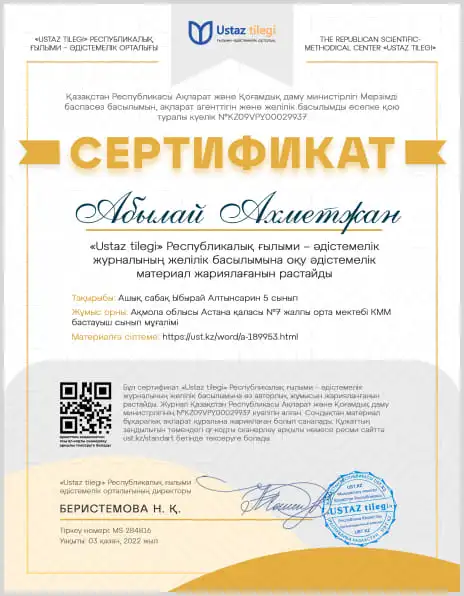
Сіз үшін 400 000 ұстаздардың еңбегі мен тәжірибесін біріктіріп, ең үлкен материалдар базасын жасадық. Төменде пәніңізді белгілеп, керек материалды алып сабағыңызға қолдана аласыз
 Дайын ҚМЖ. Барлық пәндерден 2022-2023 оқу жылына, жаңа бұйрыққа сай жасалған
Дайын ҚМЖ. Барлық пәндерден 2022-2023 оқу жылына, жаңа бұйрыққа сай жасалған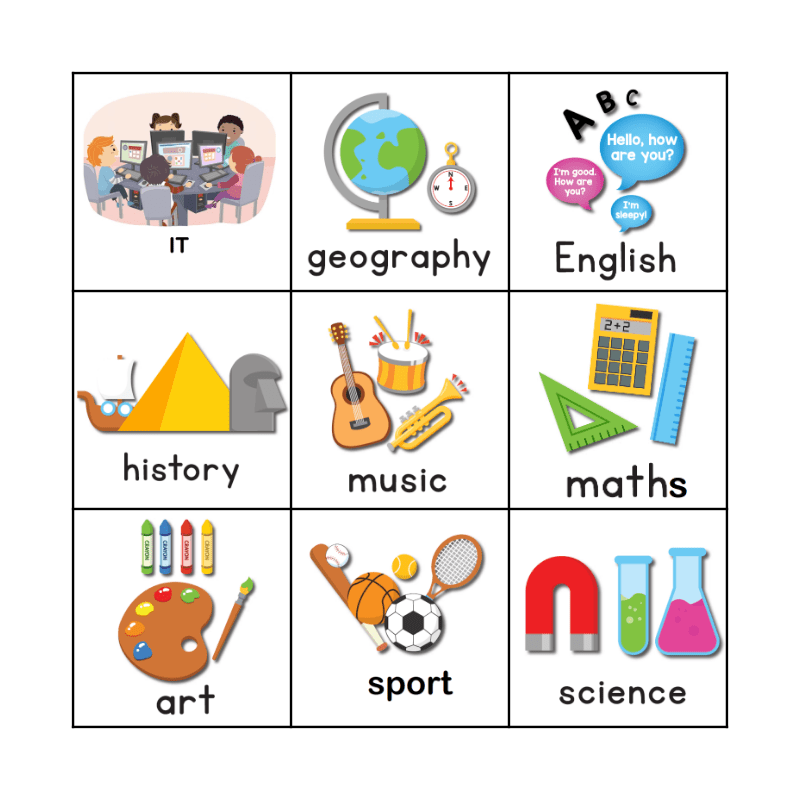


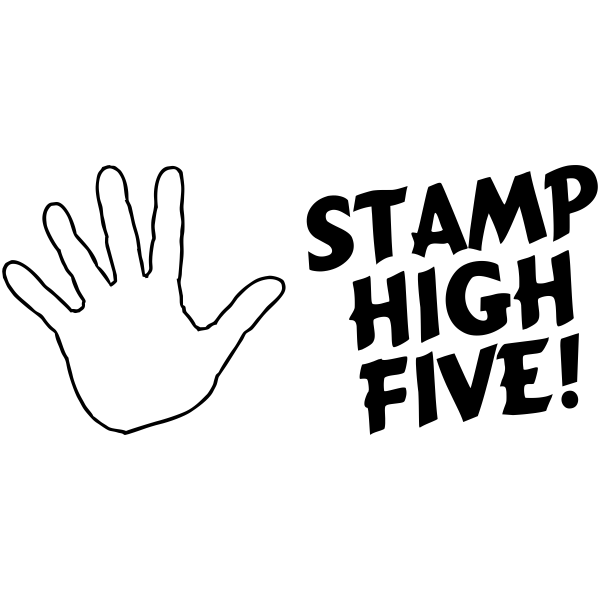 ell done! Brilliant!
Good job! I like it!
ell done! Brilliant!
Good job! I like it!
